Special Report
Humanity Closer Than Ever to Destroying Itself: The Doomsday Clock Over the Years
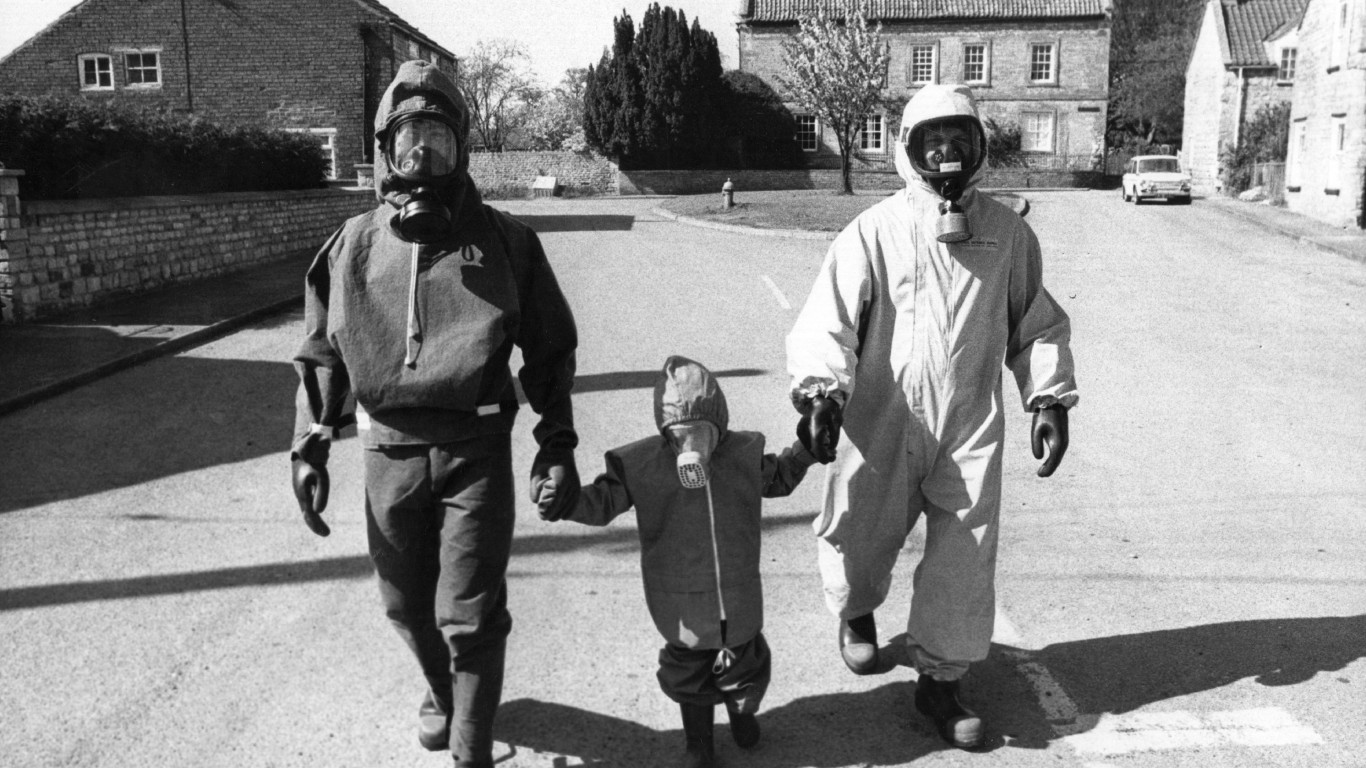
Published:
Last Updated:

This week, in response to the escalating situation in Ukraine, the bulletin of the Atomic Scientists announced that they had moved the Doomsday Clock to 90 seconds to midnight, the closest it has ever been.
Nuclear war and climate change are the main dangers our world currently faces. The probability of those catastrophes actually happening is measured by the Doomsday Clock, which reflects how close we are to destroying our world. The closer the clock gets to midnight, the more dire the situation is. If the clock hits midnight, well, that means the world has ended. Thankfully, we are not at that point yet, though we are closer than ever.
The Doomsday Clock was created by the Bulletin of the Atomic Scientists, founded by Albert Einstein and scientists who worked on the atomic bomb in the Manhattan project. It is set annually. For the past two years, prior to the move this week, the clock had been set at 100 seconds to midnight.
24/7 Wall St. reviewed the timeline of the Doomsday Clock to list the number of minutes and seconds to midnight for each year since 1947, the first year the Bulletin of the Atomic Scientists, a nonprofit science and global security organization, began using the clock. We included the number of nuclear tests conducted each year, from the nonprofit arms control group The Arms Control Association.
The Bulletin of the Atomic Scientists first emphasized the threat of nuclear annihilation as East and West nations raced to build atomic weapons after World War II. Over the ensuing years, the U.S. and the Soviet Union (now Russia) took steps to pull back from the nuclear brink. The best years, when the clock was furthest away from midnight, were after the dissolution of the Soviet Union, from 1991 through 1994. (This is what a nuclear attack would do to the world’s major cities.)
More recently, the dangers from North Korea and Iran developing their nuclear program have been affecting the clock position. In the past months, too, Russia’s President Vladimir Putin has been threatening to use nuclear weapons in Ukraine as Moscow suffers setbacks in its invasion of the country.
In 2007, the Bulletin scientists also warned for the first time of the damage climate change could inflict on the planet. In 2015, the clock moved closer to midnight, from five to three minutes to midnight, largely because of climate change. (Here are countries facing the worst climate emergencies.)
Not all the major events that have affected the clock’s position have to do with nuclear proliferation, yet they are just as dangerous to humanity’s and the planet’s safety. For example, as COVID-19 spread across the globe and a pandemic declared in 2020, the clock was advanced from two minutes to midnight to 100 seconds to midnight, where it remains since.
Some years were actually good in terms of human achievement. In 1969, the U.S. landed a man on the moon, and the clock went from seven minutes to midnight to 10. The clock has not had a good year since 2010.
Click here to see how close the human race came to ending life on earth on every year since 1947.
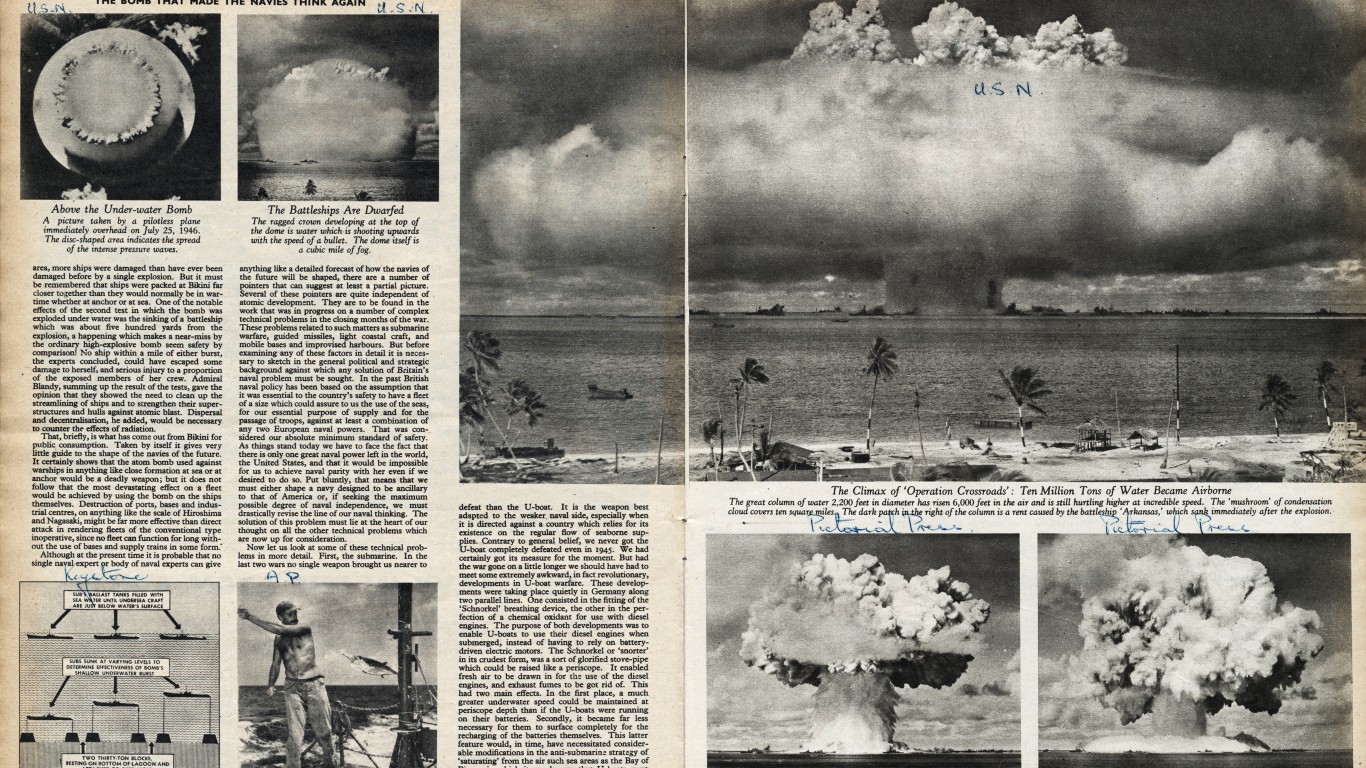
1947
> Doomsday clock position: 7 minutes to midnight
> Nuclear tests: 0
Two years after the end of World War II, world nations are aligning themselves either with the East, the Soviet Union and communism, or with the West, as the world is gearing up to the Cold War. The clock makes its debut at seven minutes to midnight.
[in-text-ad]
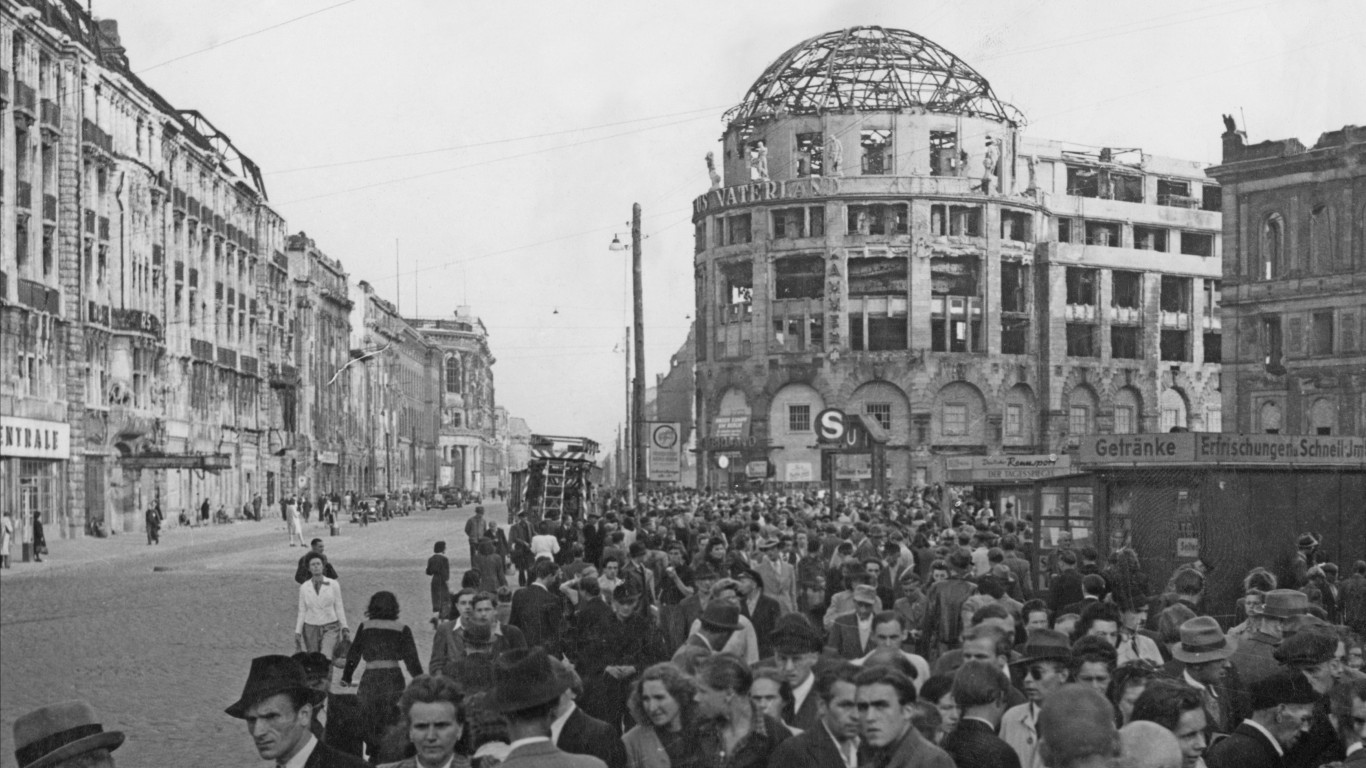
1948
> Doomsday clock position: 7 minutes to midnight
> Nuclear tests: 3
The Soviet Union attempts to take control of Berlin by blocking all road traffic to the city, fueling tensions between the communist country and Western powers.

1949
> Doomsday clock position: 3 minutes to midnight
> Nuclear tests: 1
The Soviet Union tests its first nuclear weapon. The Bulletin states, “We do not advise Americans that doomsday is near and that they can expect atomic bombs to start falling on their heads a month or year from now, but we think they have reason to be deeply alarmed and to be prepared for grave decisions.” The clock is advanced from seven to three minutes to midnight.
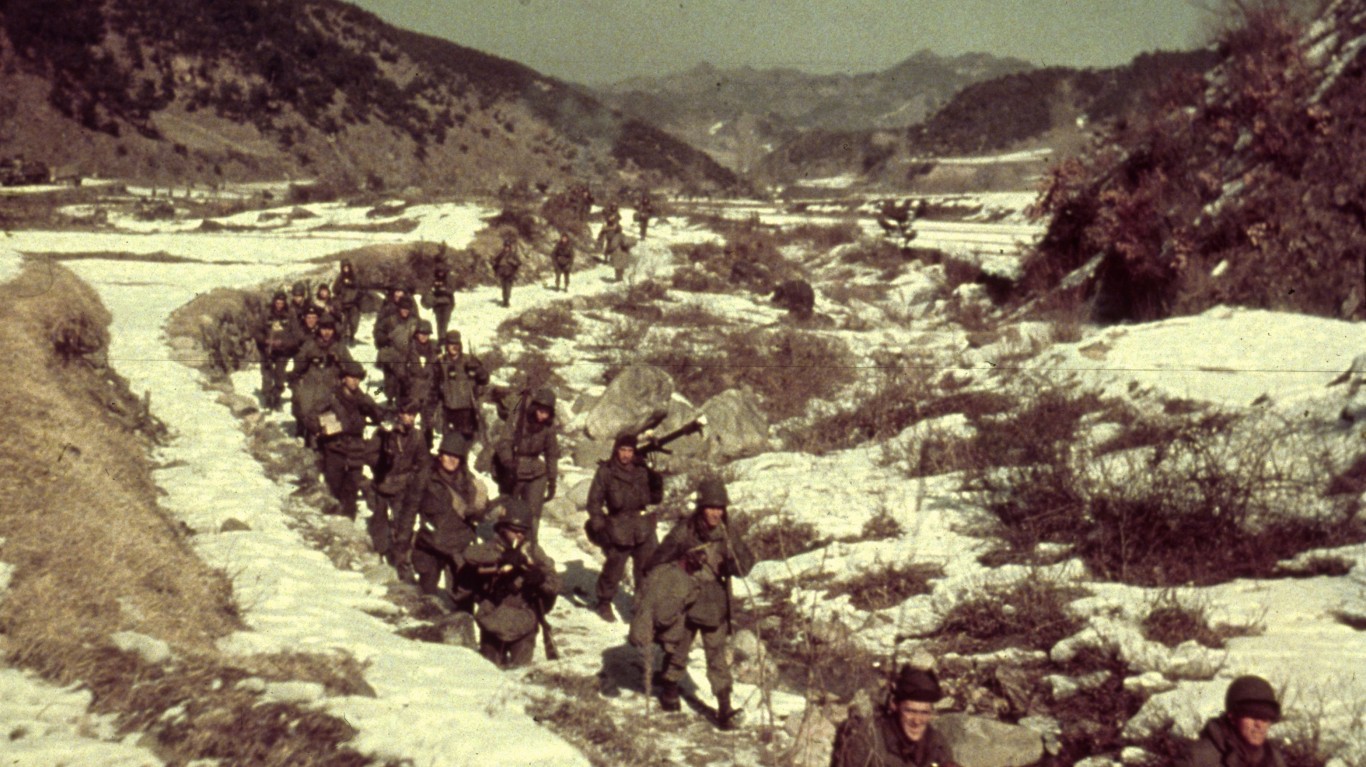
1950
> Doomsday clock position: 3 minutes to midnight
> Nuclear tests: 0
The conflict between North Korea, which is supported by communist China and the Soviets, and South Korea, which is supported by the U.S., breaks into war in June. Often called the forgotten war, the Korean War would end in 1953.

1951
> Doomsday clock position: 3 minutes to midnight
> Nuclear tests: 18
The nuclear threat continues to hover around the world in 1951. Julius and Ethel Rosenberg are convicted of passing U.S. nuclear secrets to the Soviet Union and are sentenced to death. Yet for the first time electricity is generated from a nuclear power plant.
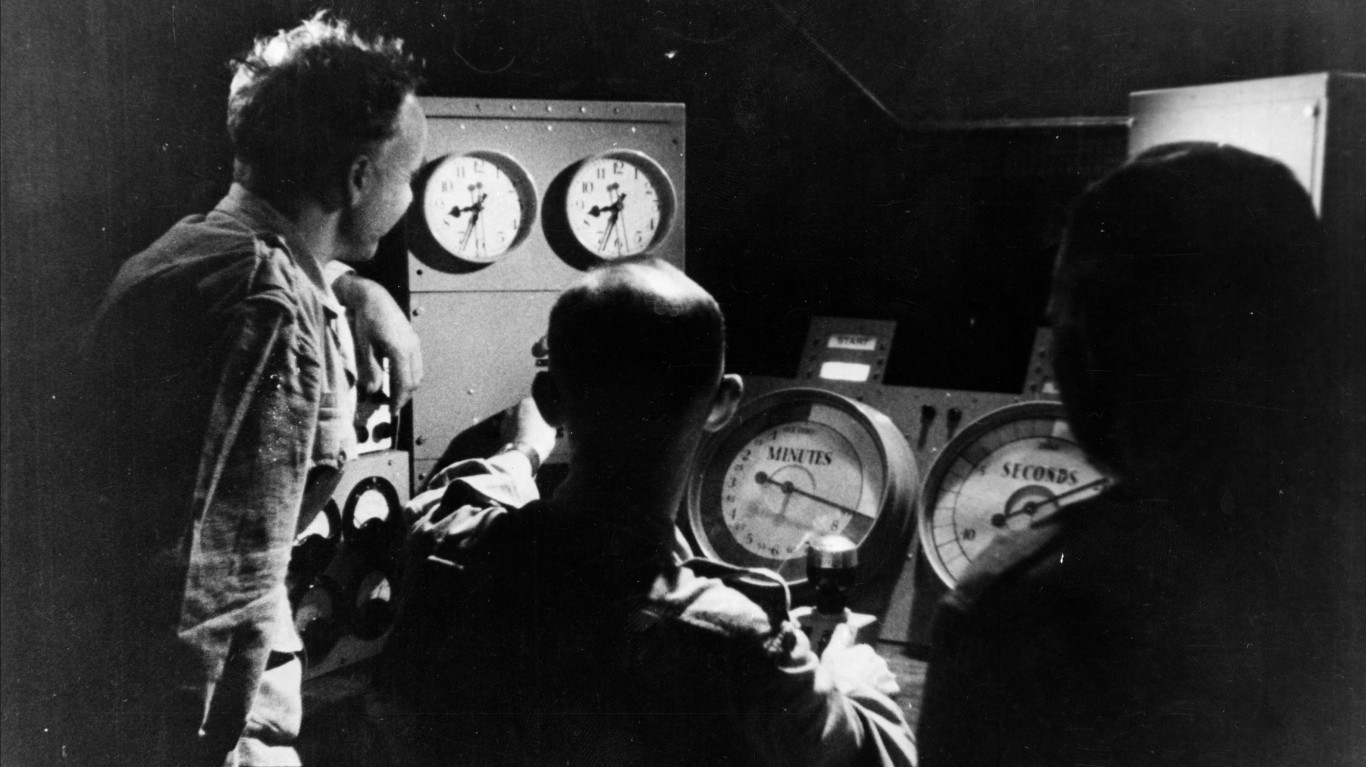
1952
> Doomsday clock position: 3 minutes to midnight
> Nuclear tests: 11
Britain joins the nuclear club when it tests its first atomic weapon.
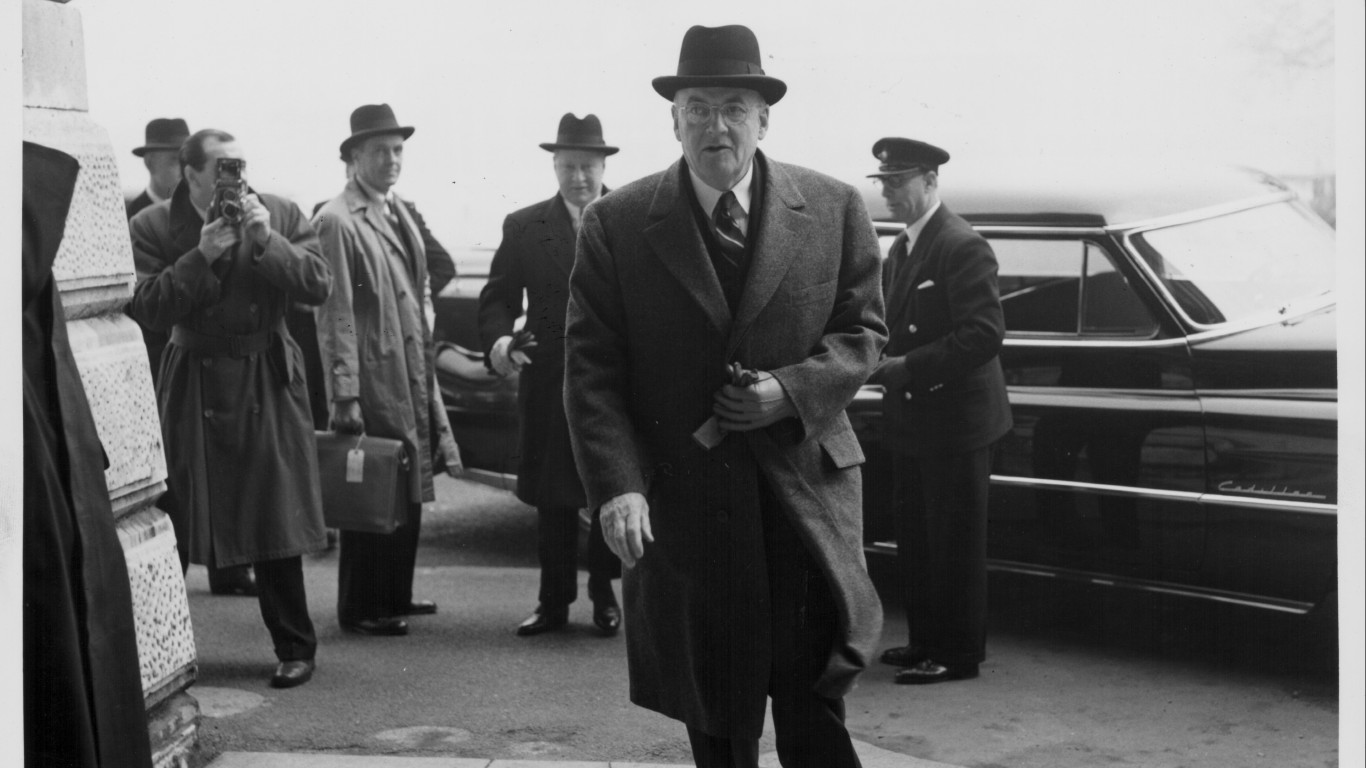
1953
> Doomsday clock position: 2 minutes to midnight
> Nuclear tests: 18
After the Soviet Union detonates a thermonuclear device, then Secretary of State John Foster Dulles tells the United Nations that “physical scientists have now found means which, if they are developed, can wipe life off the surface of the planet.” Meanwhile, the U.S. decides to pursue a hydrogen bomb, a more powerful explosive than an atomic bomb. The clock advances from three to two minutes to midnight.
[in-text-ad-2]
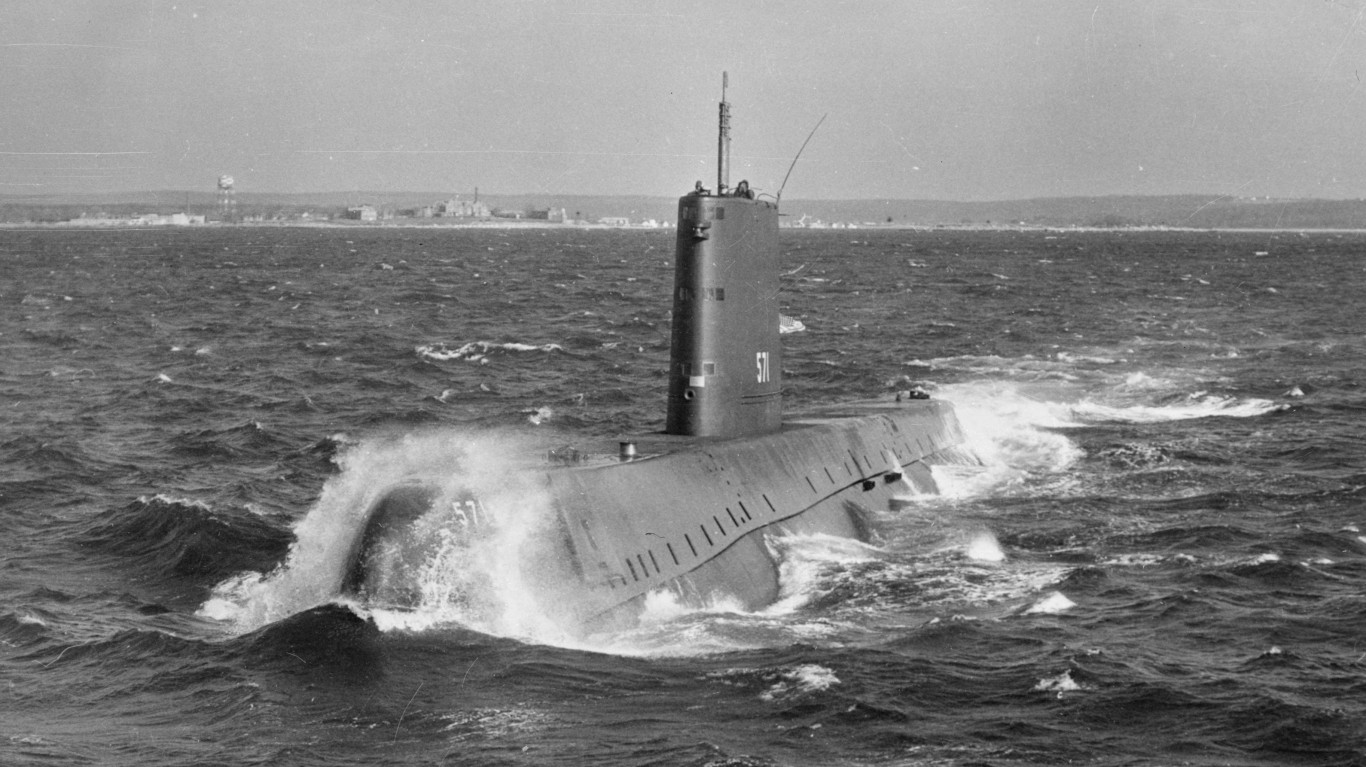
1954
> Doomsday clock position: 2 minutes to midnight
> Nuclear tests: 16
The U.S. launches its first nuclear-powered submarine, the USS Nautilus. Secretary of State John Foster Dulles tells the Council of Foreign Relations the U.S. will protect its allies with “massive retaliatory power,” in what is believed to be the first statement in the doctrine of “mutually assured destruction.”
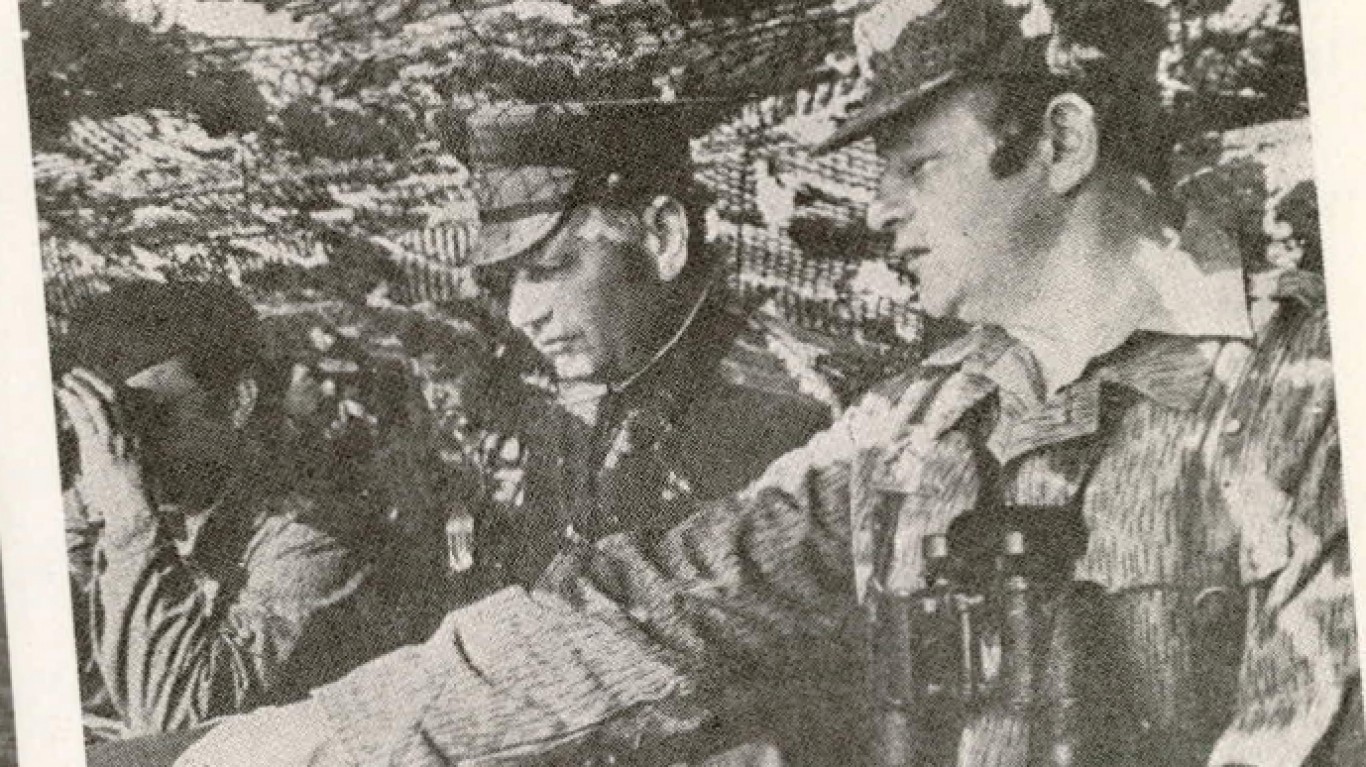
1955
> Doomsday clock position: 2 minutes to midnight
> Nuclear tests: 24
To push back against the growing influence of NATO, which was founded in 1949, the Soviet Union and several Eastern European countries formally sign the Warsaw Pact. Countries include Albania, Poland, Czechoslovakia, Hungary, Bulgaria, Romania, and the German Democratic Republic (East Germany).

1956
> Doomsday clock position: 2 minutes to midnight
> Nuclear tests: 33
Although it signed on to the Warsaw Pact, Hungary bristles under Soviet rule. A rebellion is quickly quelled by the Soviets.
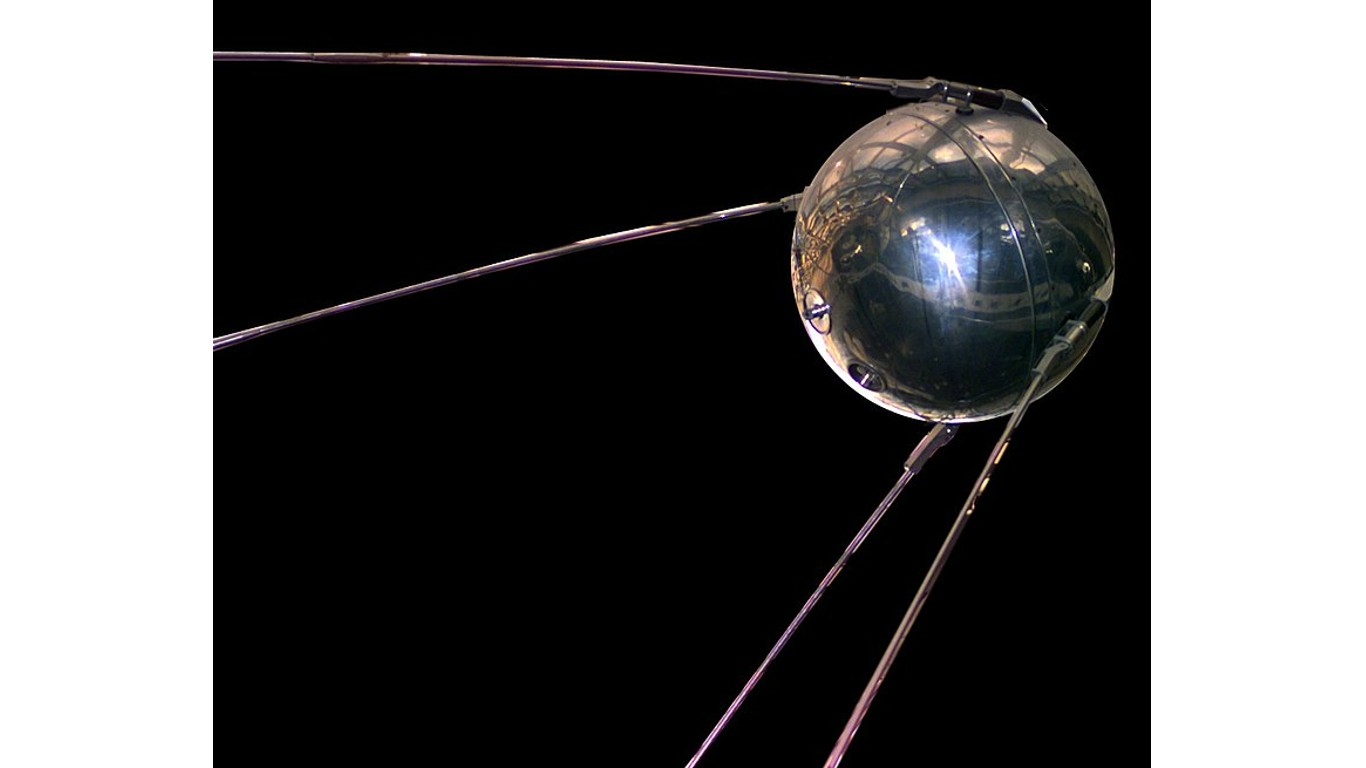
1957
> Doomsday clock position: 2 minutes to midnight
> Nuclear tests: 55
The Space Race between the U.S. and the Soviet Union blasts off with the launch of the first Earth-orbiting satellite, Sputnik.
[in-text-ad]

1958
> Doomsday clock position: 2 minutes to midnight
> Nuclear tests: 116
President Dwight Eisenhower signs the National Aeronautics and Space Act of 1958. NASA is intended to promote aeronautical research.
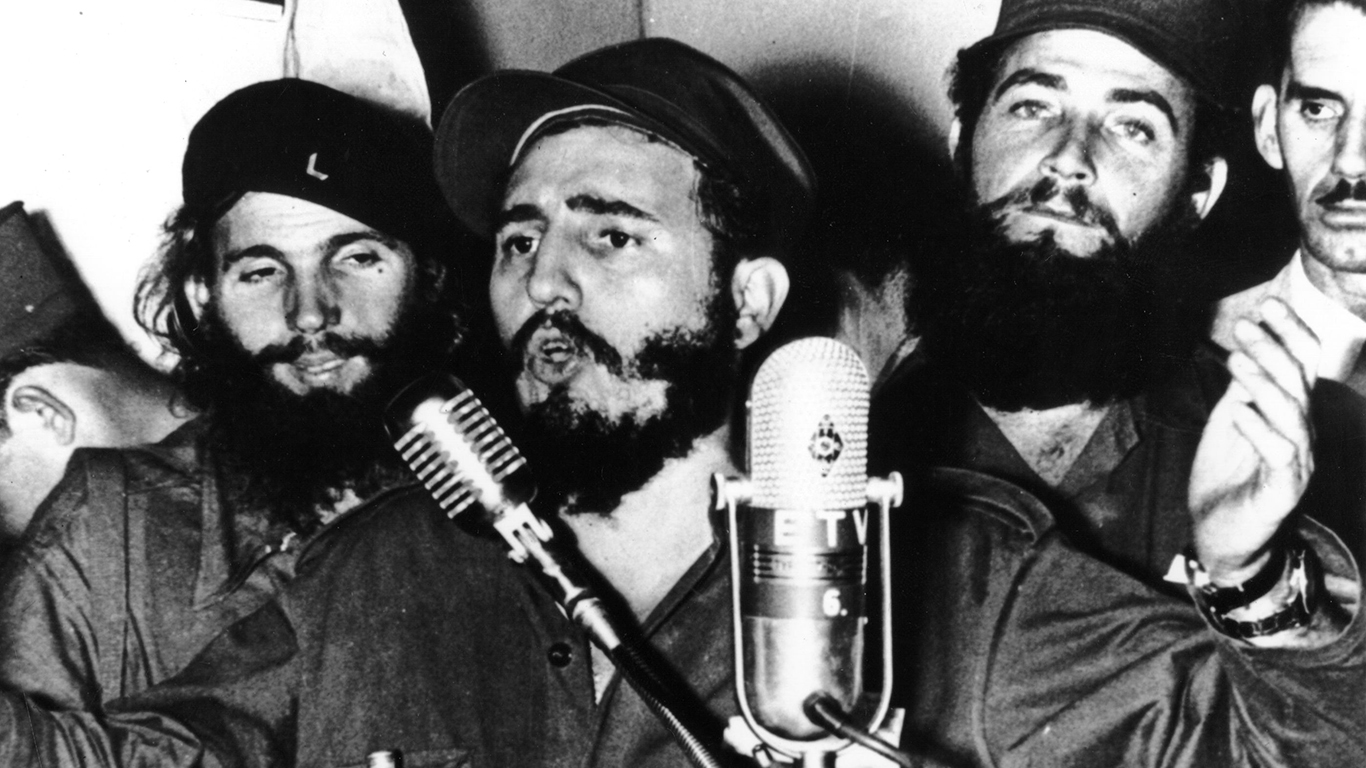
1959
> Doomsday clock position: 2 minutes to midnight
> Nuclear tests: 0
Then Vice President Richard Nixon and Soviet Union Premier Nikita Khrushchev engage in an impromptu debate, known as the “Kitchen Debate.” The two leaders have a lively back-and-forth on the merits of communism versus capitalism at a fair. In the same year, Fidel Castro comes to power in Cuba, an event which would have implications in later years.
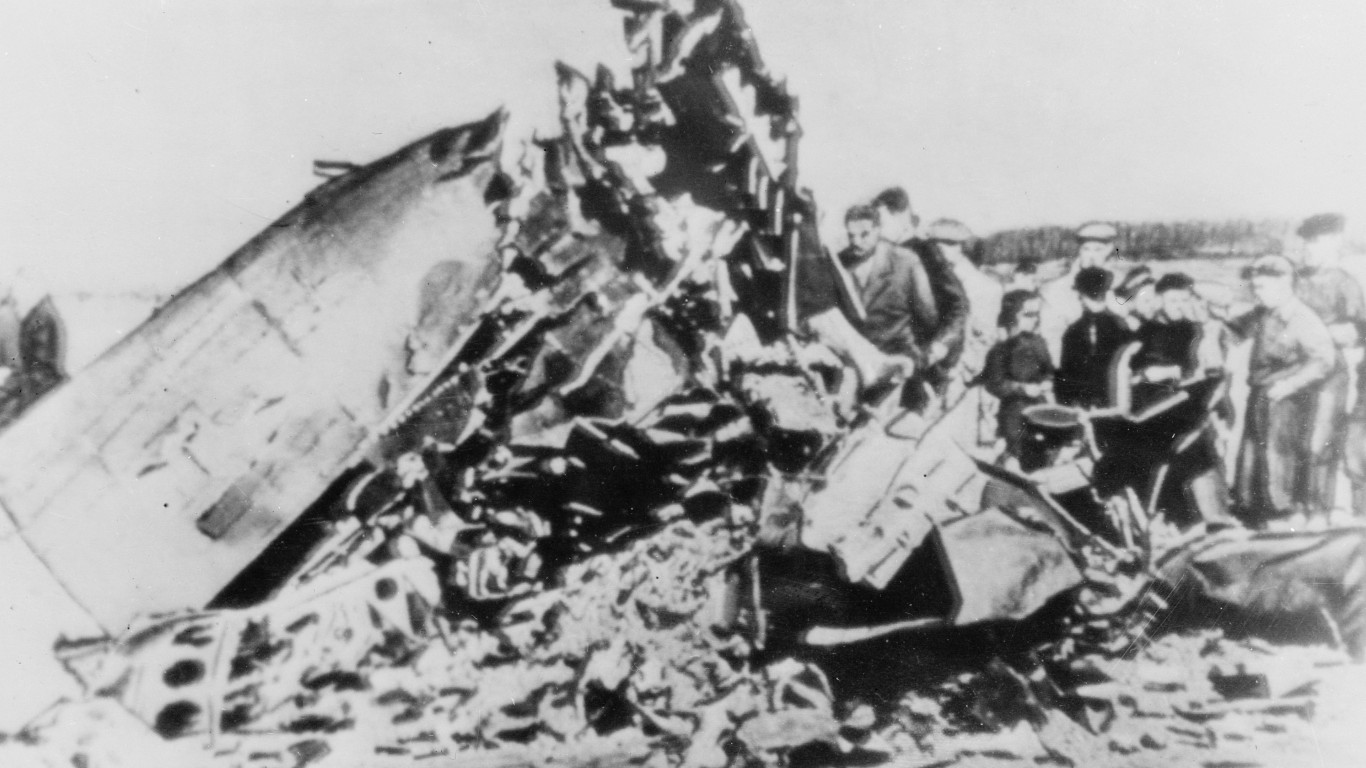
1960
> Doomsday clock position: 7 minutes to midnight
> Nuclear tests: 3
Despite U-2 pilot Gary Powers being shot down and captured over the Soviet Union, the clock is set back from two to seven minutes to midnight. The Bulletin notes that there seems to be a change in humanity’s attitude to war and rule of force and that there seems to be an awakening of a world community. Specifically, there is “a change in the climate of our diplomatic relations with the Soviet Union … engendered by the personal contacts of the leaders of the great powers and their visits to different countries of the world.”

1961
> Doomsday clock position: 7 minutes to midnight
> Nuclear tests: 71
In 1958, Soviet Union Premier Nikita Khrushchev demanded the Western Powers leave Berlin. Despite ensuing diplomatic efforts, East Berlin Mayor Walter Ulbricht closes the border and erects the infamous Berlin Wall in August 1961.

1962
> Doomsday clock position: 7 minutes to midnight
> Nuclear tests: 178
The simmering Cold War between the U.S. and the Soviet Union culminates in the Cuban Missile Crisis. In 1962, the U.S. learns the Soviets had installed nuclear missiles in Cuba, an island 90 miles from our shores. President John F. Kennedy demands the Soviets remove the weapons, and the U.S. imposes a naval “quarantine” of Cuba. After a tense staredown, Khrushchev eventually agrees to remove the missiles.
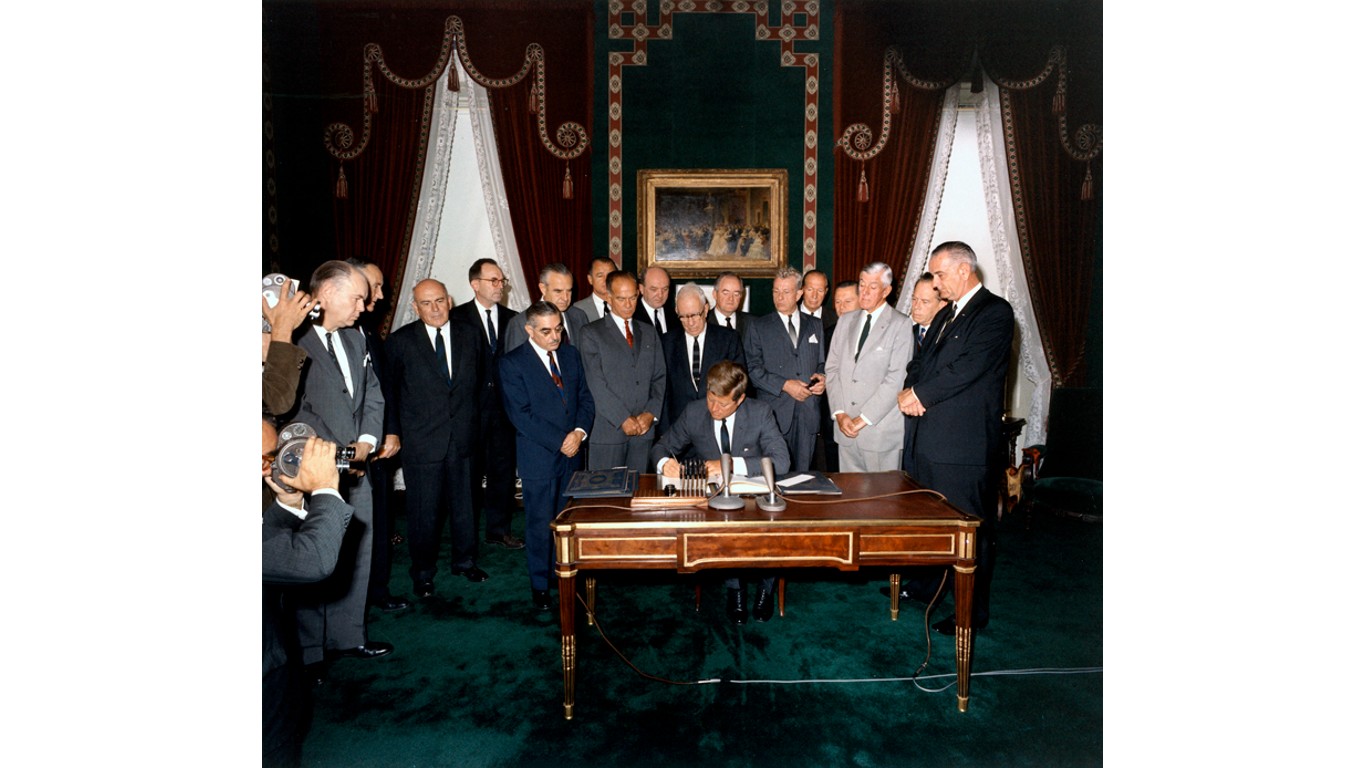
1963
> Doomsday clock position: 12 minutes to midnight
> Nuclear tests: 50
After a decade of almost nonstop nuclear tests, the United States and Soviet Union sign the Partial Test Ban Treaty, which ends all atmospheric nuclear testing. While it does not outlaw underground testing, the treaty represents progress in at least slowing the arms race, the Bulletin notes. The clock is moved further back from midnight, from seven to 12 minutes to midnight.
[in-text-ad-2]

1964
> Doomsday clock position: 12 minutes to midnight
> Nuclear tests: 60
In August 1964, the North Vietnamese fire at two U.S. destroyers in the Gulf of Tonkin. In response, Congress passed the Gulf of Tonkin Resolution, authorizing President Lyndon Johnson to retaliate, thereby setting the legal basis for the Vietnam War. Also that year, China tests its own atomic bomb.

1965
> Doomsday clock position: 12 minutes to midnight
> Nuclear tests: 58
In March, the Vietnam War intensifies with a U.S. and South Vietnamese-led bombing campaign against targets in North Vietnam. In November, U.S. and North Vietnamese forces engage in the first major battle of the war, the Battle of Ia Drang.

1966
> Doomsday clock position: 12 minutes to midnight
> Nuclear tests: 76
China’s Communist Leader Mao Zedong launches China’s Cultural Revolution to reassert the government’s control over the population. However, the legacy is one of hardship, with millions killed and imprisoned.
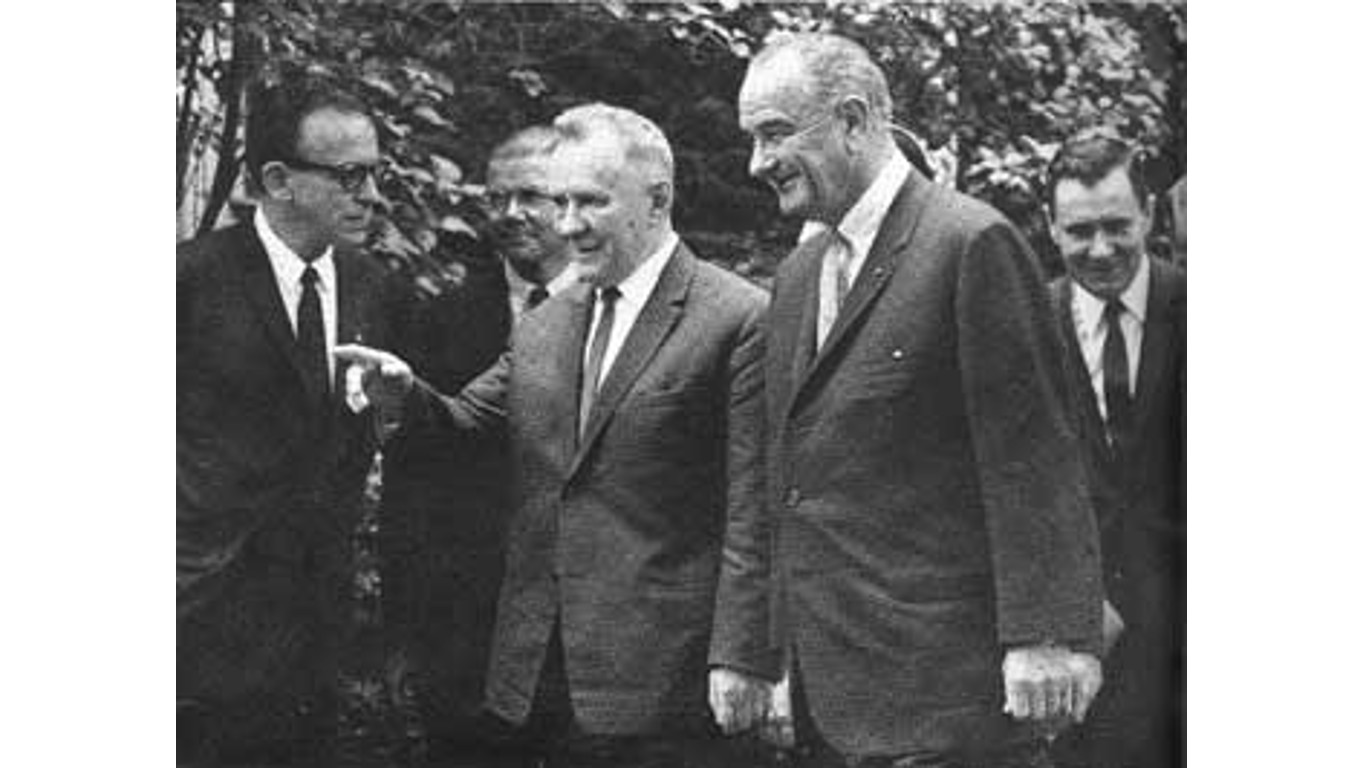
1967
> Doomsday clock position: 12 minutes to midnight
> Nuclear tests: 64
A break in the Cold War takes place in Glassboro, New Jersey, when President Lyndon Johnson and Soviet Premier Alexei Kosygin meet to discuss relations between the two countries.
[in-text-ad]
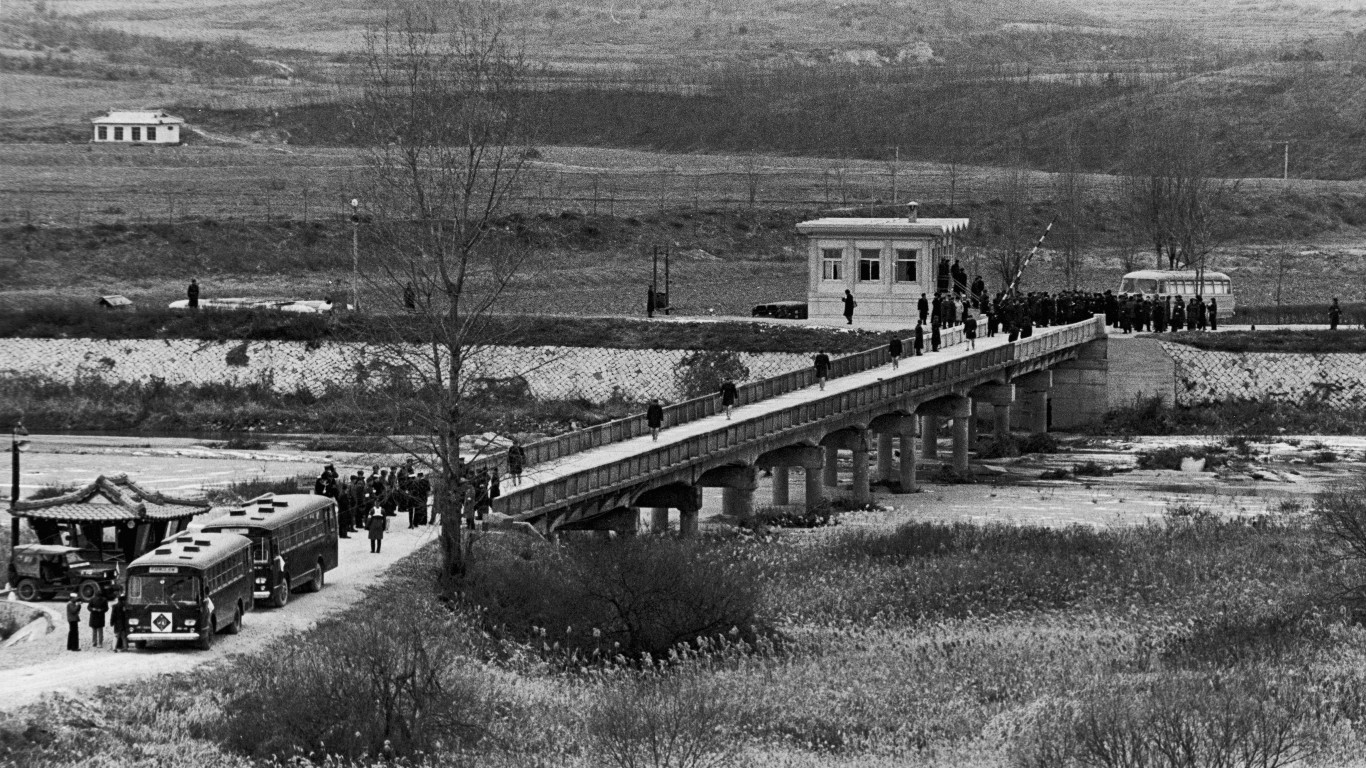
1968
> Doomsday clock position: 7 minutes to midnight
> Nuclear tests: 79
Across the globe, regional wars rage, and U.S. involvement in Vietnam intensifies. Tensions flare between North Korea and the U.S. after the communist state captures the USS Pueblo. Johnson declines to run again for president, and the Soviet Army crushes a revolt in Czechoslovakia. As it moves the clock forward, closer to midnight, the Bulletin laments, “There is a mass revulsion against war, yes; but no sign of conscious intellectual leadership in a rebellion against the deadly heritage of international anarchy.”
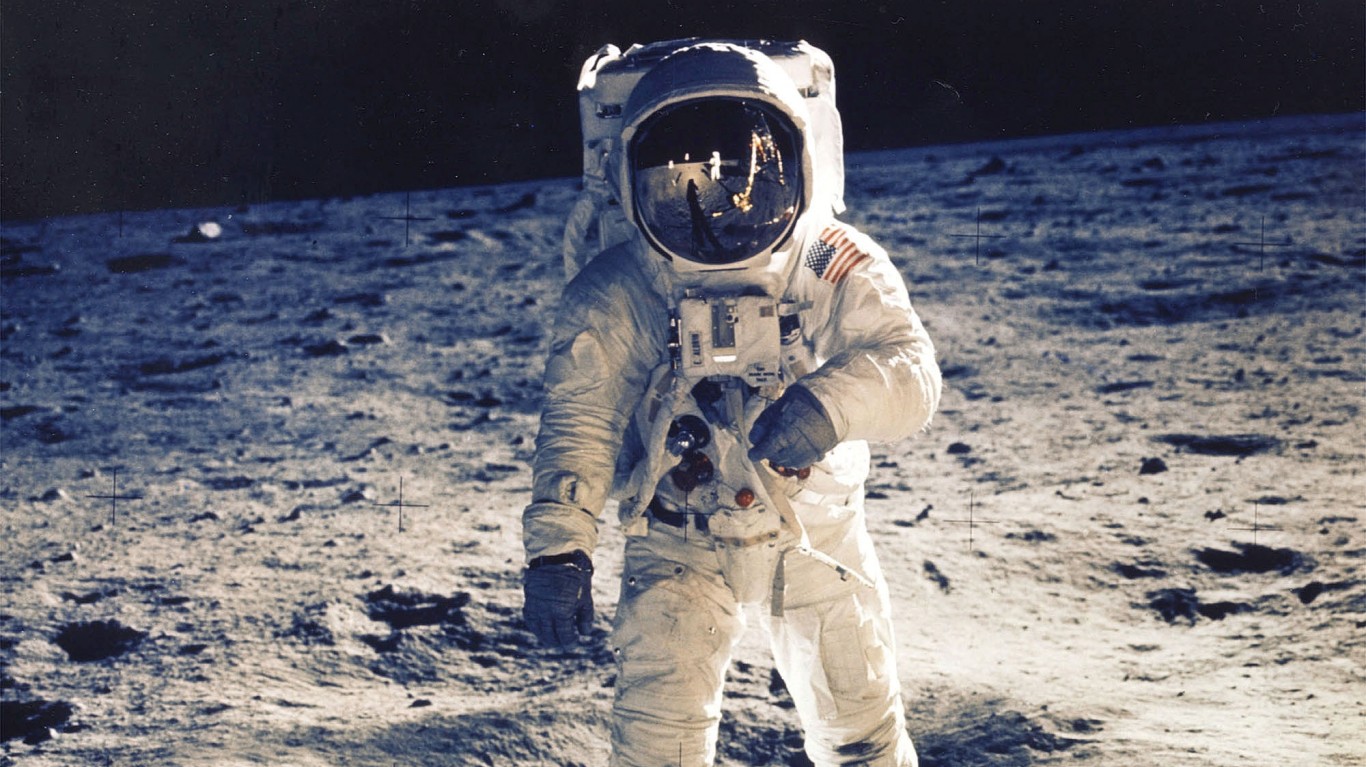
1969
> Doomsday clock position: 10 minutes to midnight
> Nuclear tests: 67
The Cold War takes a backseat to a human achievement. In July, Apollo II lands on the moon, a major accomplishment in the space race. The Bulletin again moves the clock back from midnight, from seven to 10 minutes to midnight.
1970
> Doomsday clock position: 10 minutes to midnight
> Nuclear tests: 64
The Treaty on the Non-Proliferation of Nuclear Weapons goes into effect.
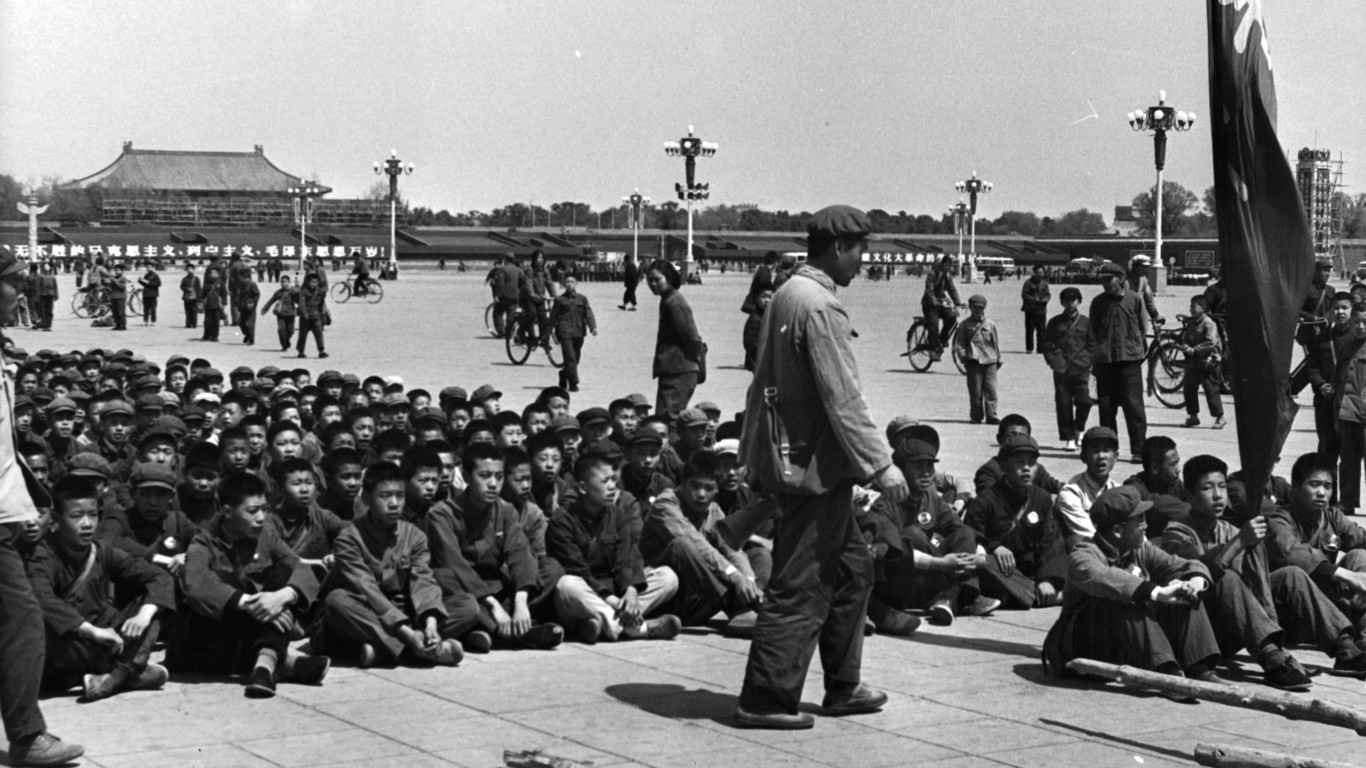
1971
> Doomsday clock position: 10 minutes to midnight
> Nuclear tests: 53
The U.N. General Assembly officially recognizes the People’s Republic of China as a legitimate governing body.

1972
> Doomsday clock position: 12 minutes to midnight
> Nuclear tests: 57
The Bulletin of Atomic Scientists moves the clock two minutes back from midnight, explaining: “The United States and Soviet Union attempt to curb the race for nuclear superiority by signing the Strategic Arms Limitation Treaty (SALT) and the Anti-Ballistic Missile (ABM) Treaty. The two treaties force a nuclear parity of sorts.”
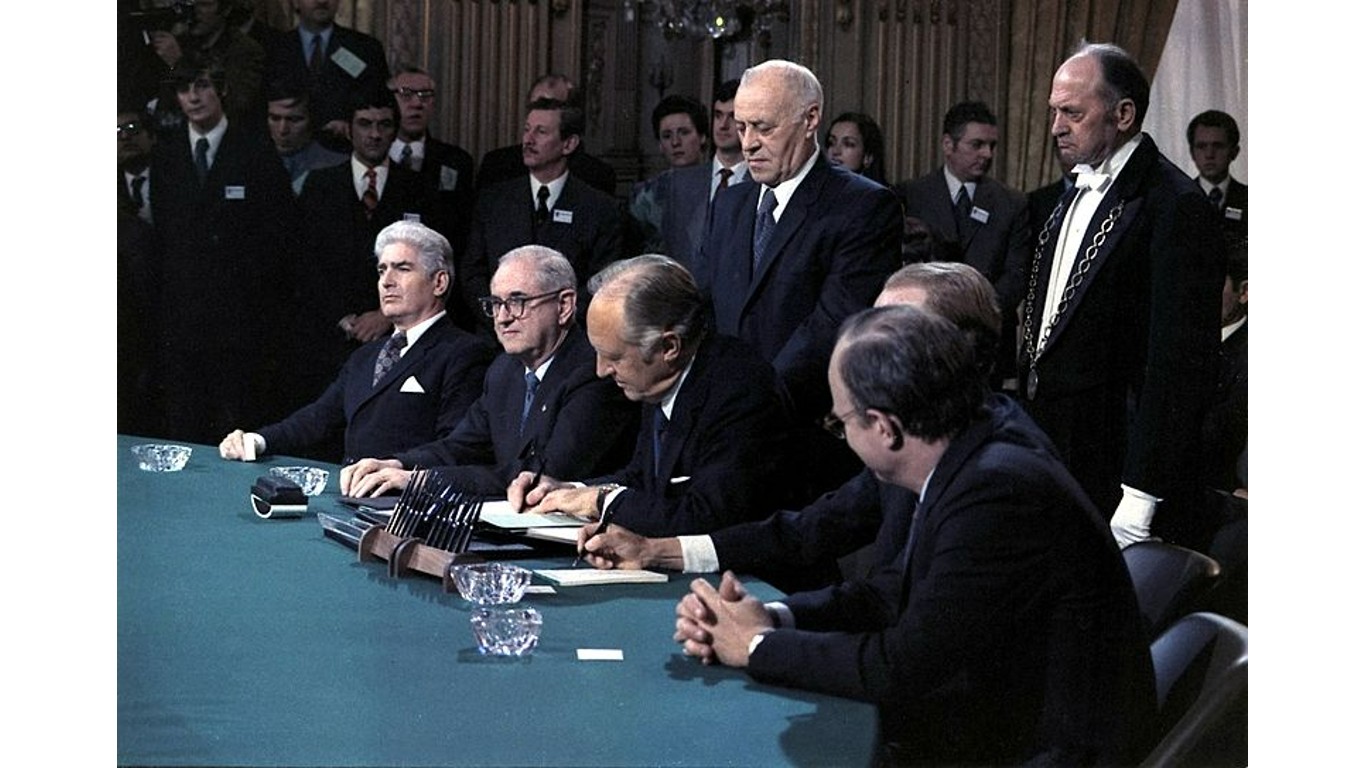
1973
> Doomsday clock position: 12 minutes to midnight
> Nuclear tests: 48
This year, the U.S. officially exits the war in Vietnam, marked with the signing of the Paris Peace Accords.
[in-text-ad-2]
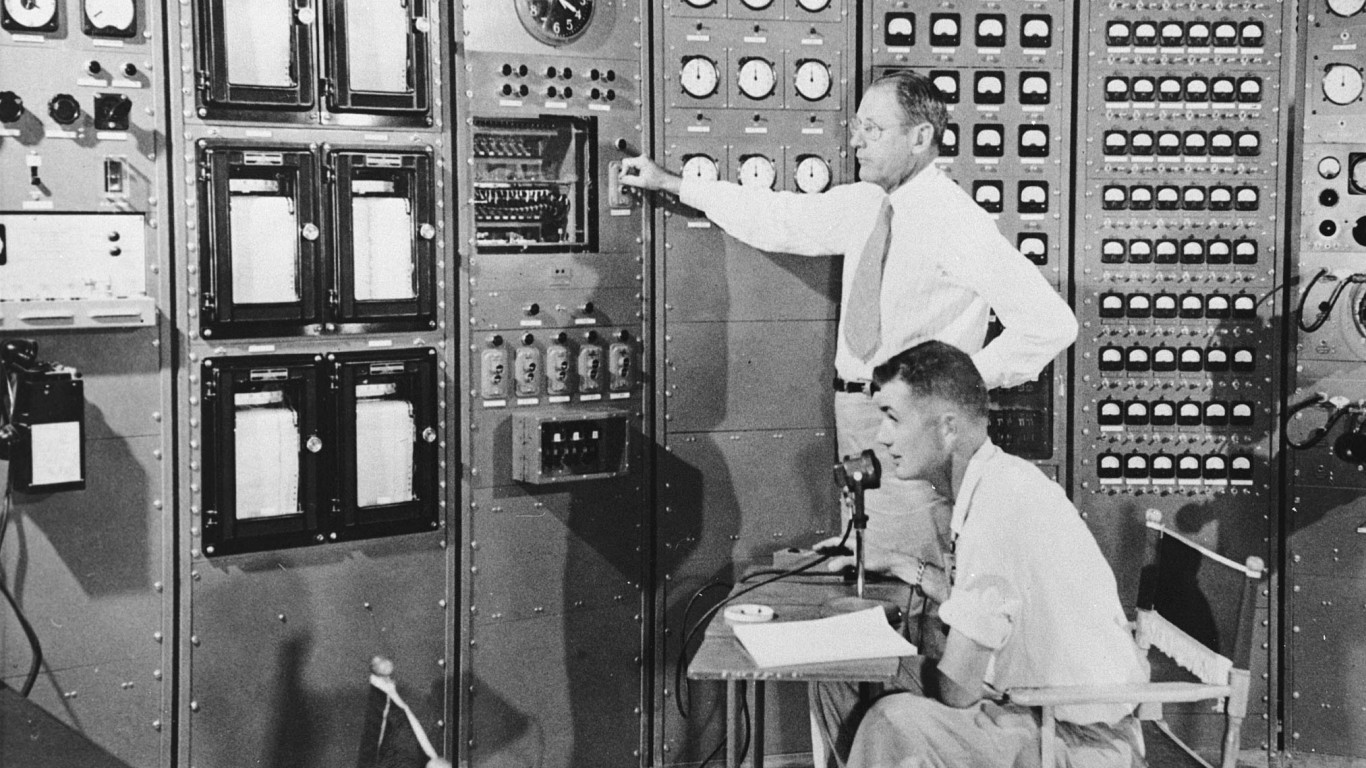
1974
> Doomsday clock position: 9 minutes to midnight
> Nuclear tests: 55
The clock moves closer to midnight for the first time since 1968. The Bulletin of Atomic Scientists explains: “South Asia gets the Bomb, as India tests its first nuclear device. And any gains in previous arms control agreements seem like a mirage. The United States and Soviet Union appear to be modernizing their nuclear forces, not reducing them.”
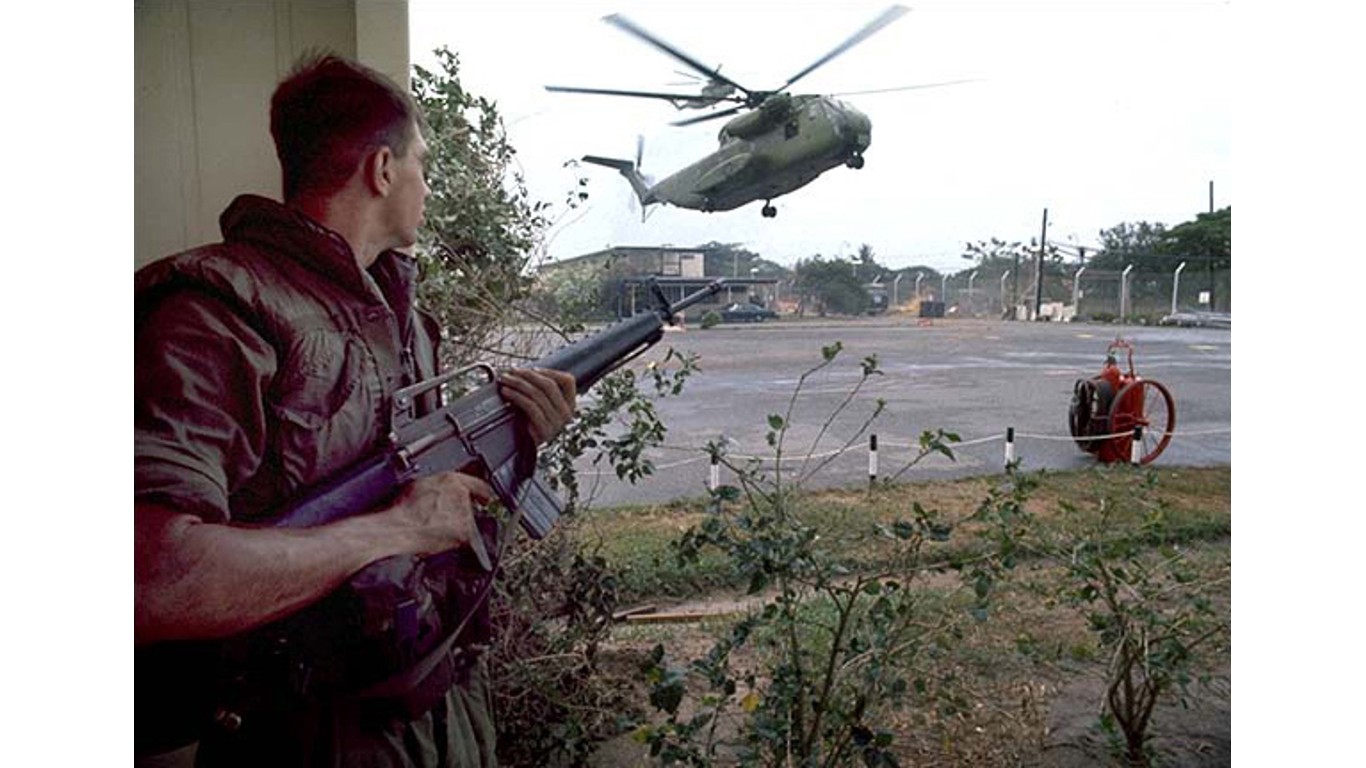
1975
> Doomsday clock position: 9 minutes to midnight
> Nuclear tests: 44
The Fall of Saigon officially ends the Vietnam War as North Vietnamese forces take over the capital city of South Vietnam.

1976
> Doomsday clock position: 9 minutes to midnight
> Nuclear tests: 51
Chinese leader Mao Zedong dies. He served as chairman or chief of state of the People’s Republic of China from 1949 to 1959 and chairman of the party until his death.
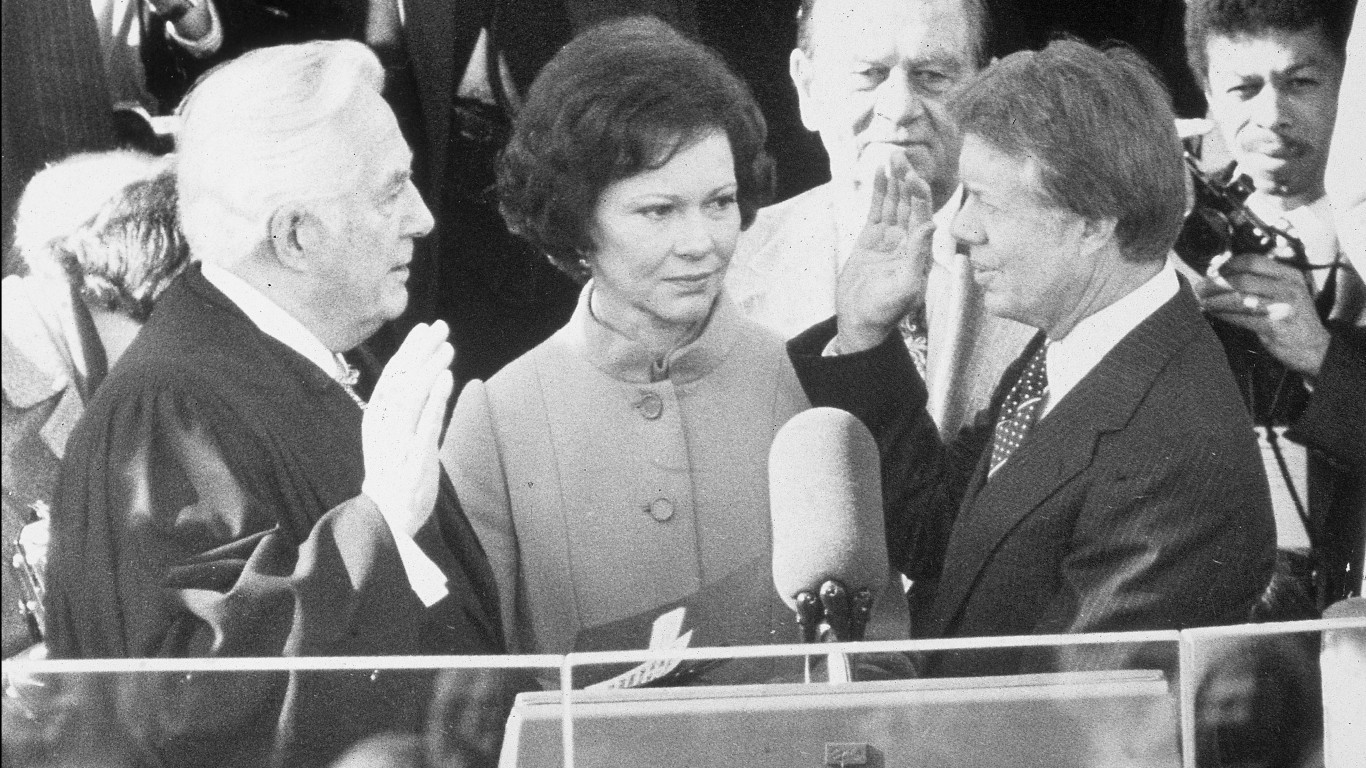
1977
> Doomsday clock position: 9 minutes to midnight
> Nuclear tests: 54
Newly elected President Jimmy Carter goes before the United Nations, outlining his policy of holding countries accountable for human rights.
[in-text-ad]
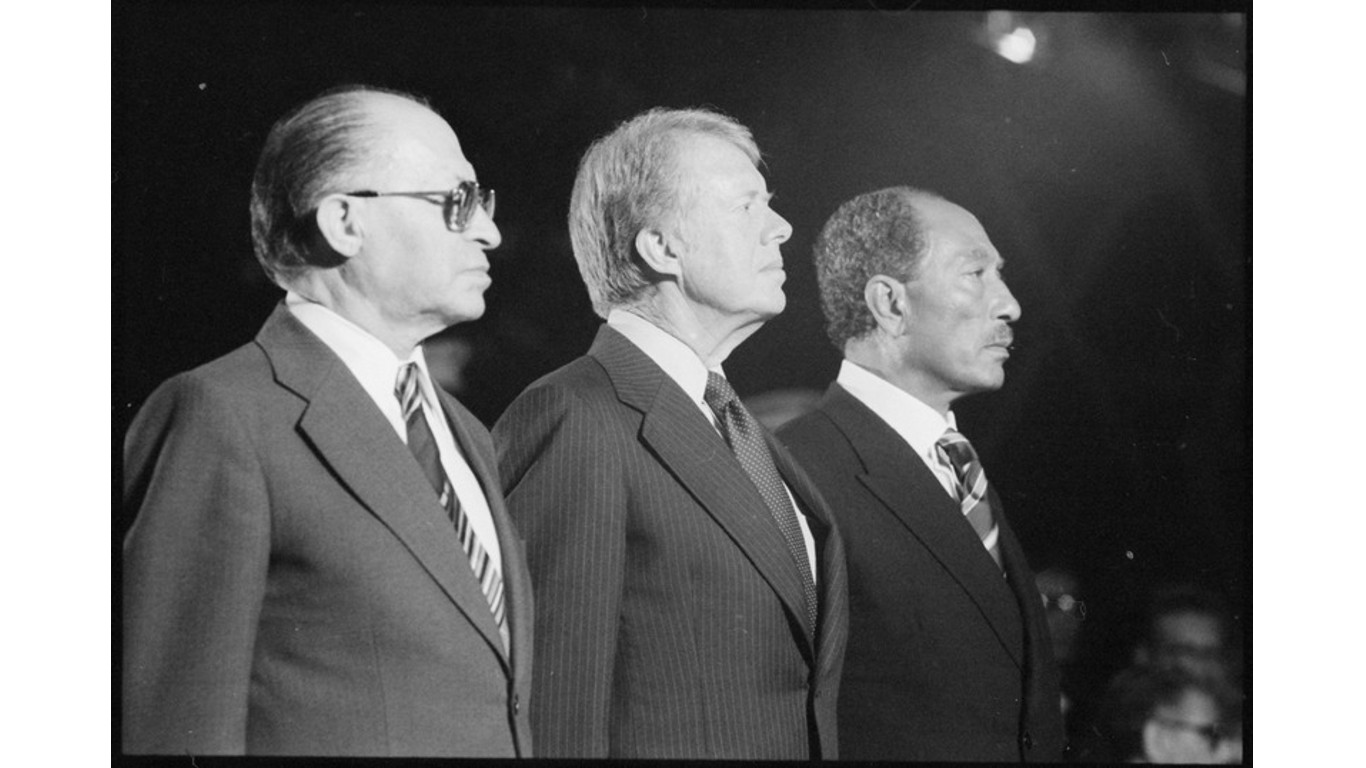
1978
> Doomsday clock position: 9 minutes to midnight
> Nuclear tests: 66
In a deal brokered by President Carter, Israel and Egypt sign a peace treaty at Camp David. The Camp David Accords are the first such agreements between an Arab state and Israel.
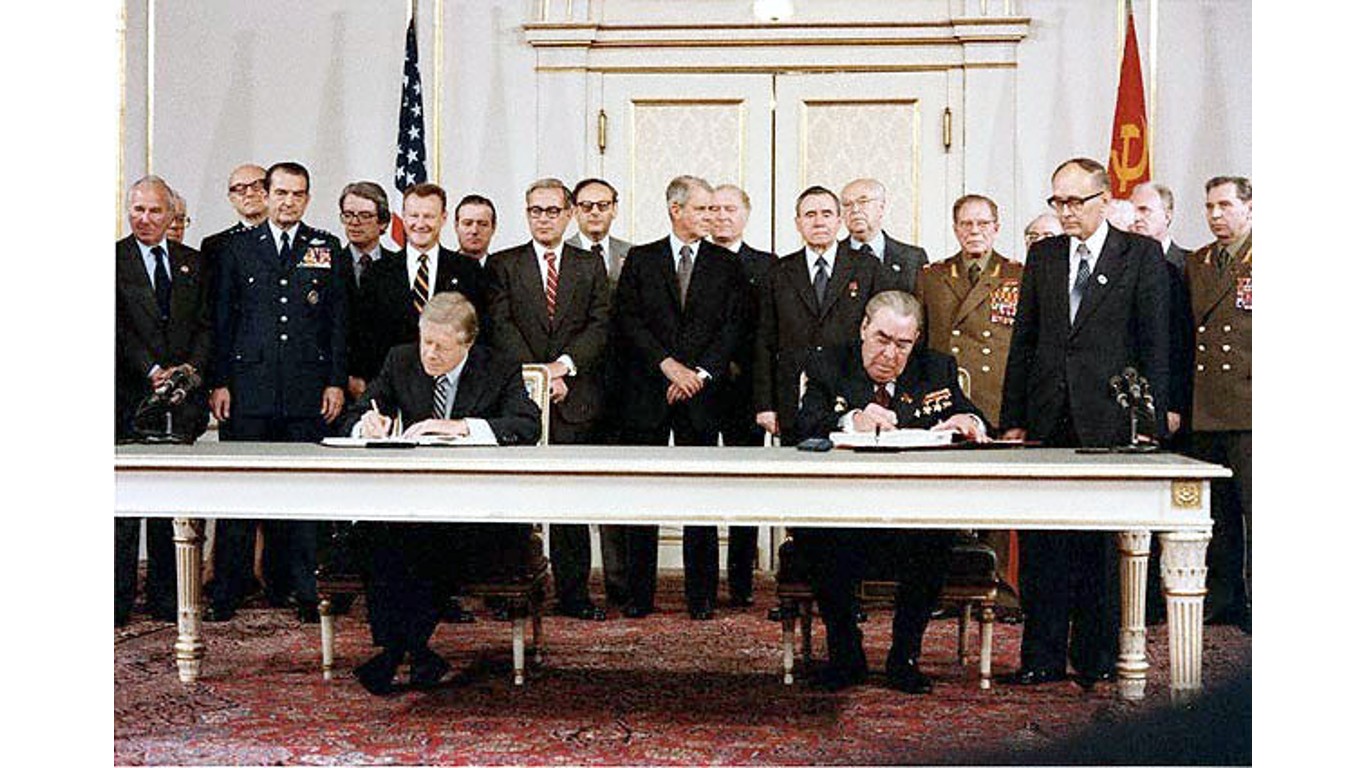
1979
> Doomsday clock position: 9 minutes to midnight
> Nuclear tests: 58
The U.S. and Soviet Union sign the SALT II agreement to reduce the number of offensive weapons systems.

1980
> Doomsday clock position: 7 minutes to midnight
> Nuclear tests: 54
Despite some encouraging disarmament agreements, the U.S. and the USSR continue the arms race, acting, as the Bulletin describes, “as ‘nucleoholics’ — drunks who continue to insist that the drink being consumed is positively ‘the last one,’ but who can always find a good excuse for ‘just one more round’.” The Bulletin advances the clock two minutes closer to midnight. This is the beginning of the early 1980s heightened nuclear tension.
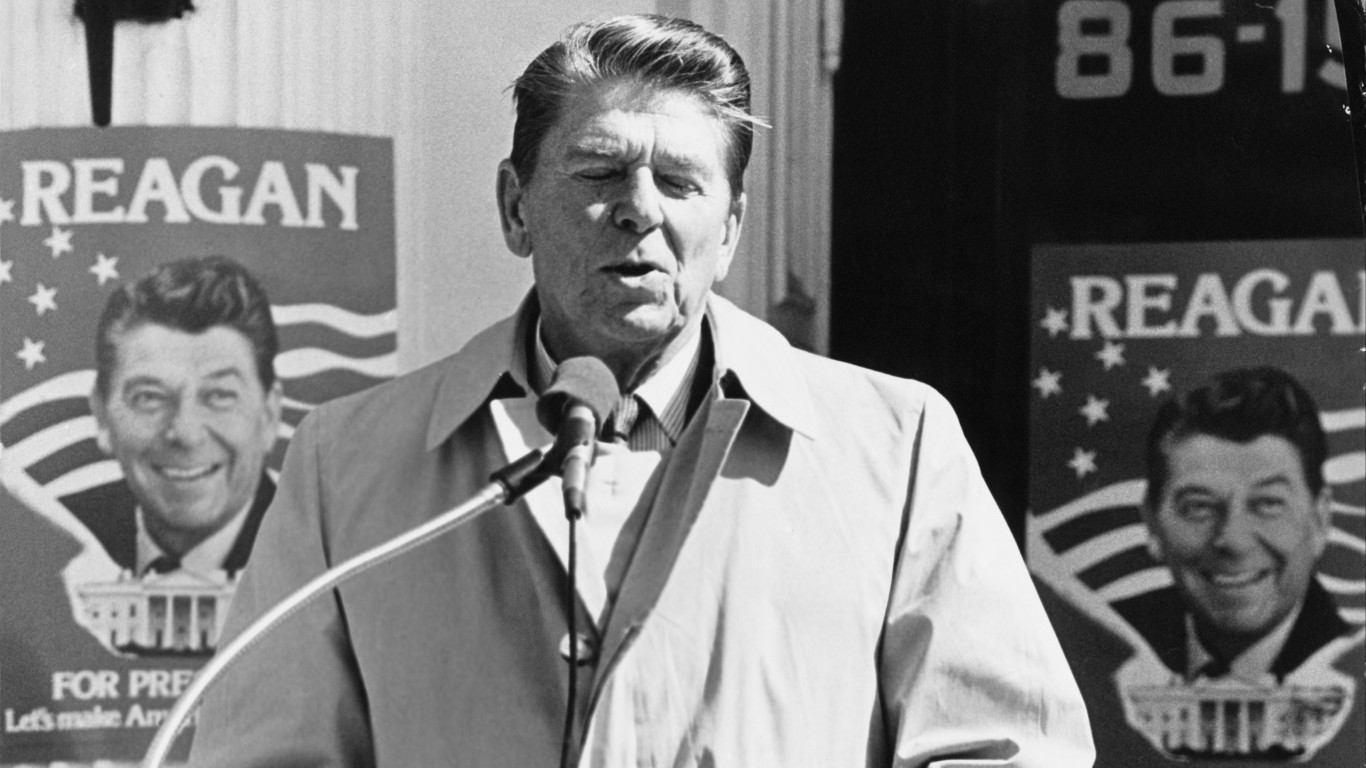
1981
> Doomsday clock position: 4 minutes to midnight
> Nuclear tests: 50
The Soviet invasion of Afghanistan hardens the U.S. nuclear posture. The rhetoric only intensifies with the election of Ronald Reagan, who scraps any talk of arms control and proposes that the best way to end the Cold War is for the United States to win it, as the Bulletin moves the clock three minutes closer to midnight.
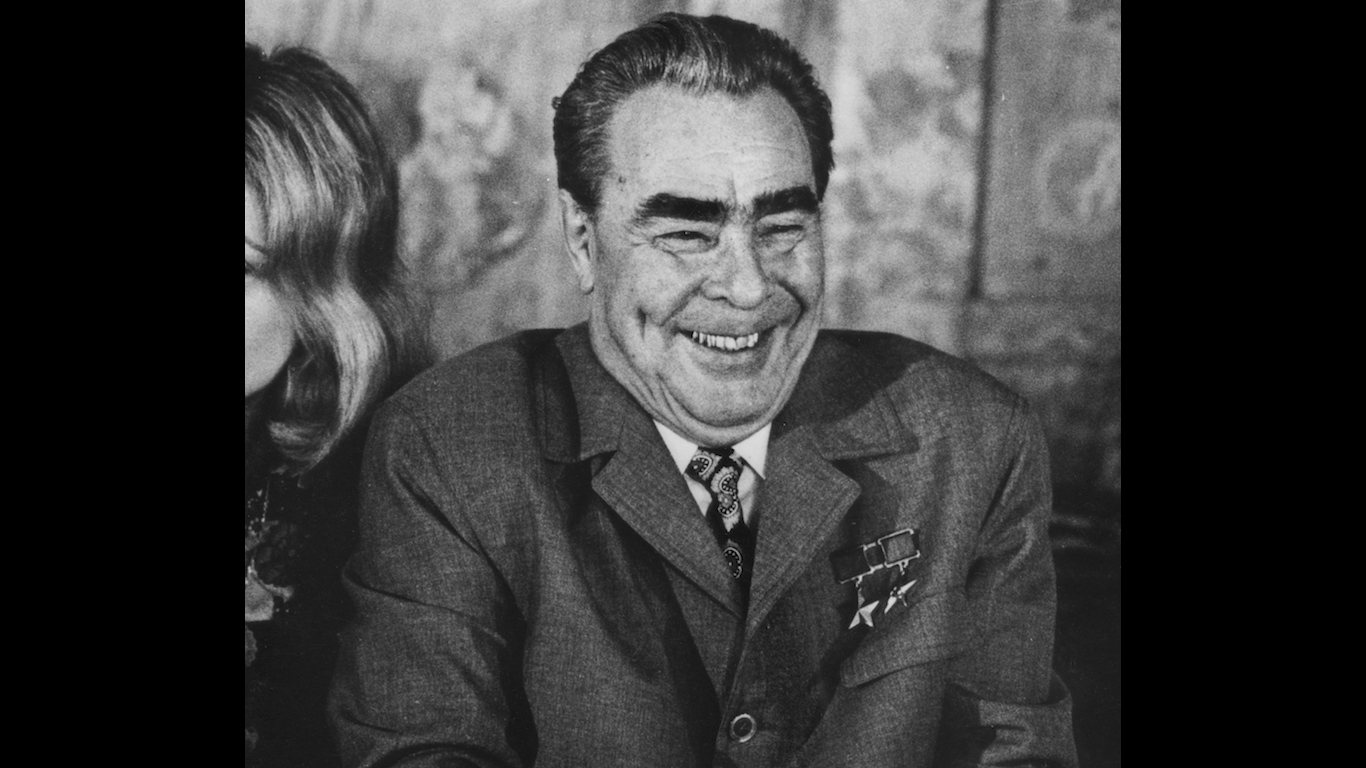
1982
> Doomsday clock position: 4 minutes to midnight
> Nuclear tests: 49
Britain and Argentina fight over the Falkland Islands, a British territory off the coast of South America. In Moscow, Soviet leader Leonid Brezhnev dies and is replaced by former KGB chief Yuri Andropov.

1983
> Doomsday clock position: 4 minutes to midnight
> Nuclear tests: 55
President Reagan proposes the “Star Wars” missile program in an effort to combat the Soviet’s nuclear power. The Strategic Defense Initiative is an anti-ballistic missile program designed to shoot down nuclear missiles in space.
[in-text-ad-2]
1984
> Doomsday clock position: 3 minutes to midnight
> Nuclear tests: 57
U.S.-Soviet relations reach their iciest point in decades, with the U.S. flouting arms control agreements with its space-based anti-ballistic missile program. Dialogue between the two superpowers virtually stops. “Arms control negotiations have been reduced to a species of propaganda,” a concerned Bulletin informs readers as it advances the clock one minute closer to midnight.
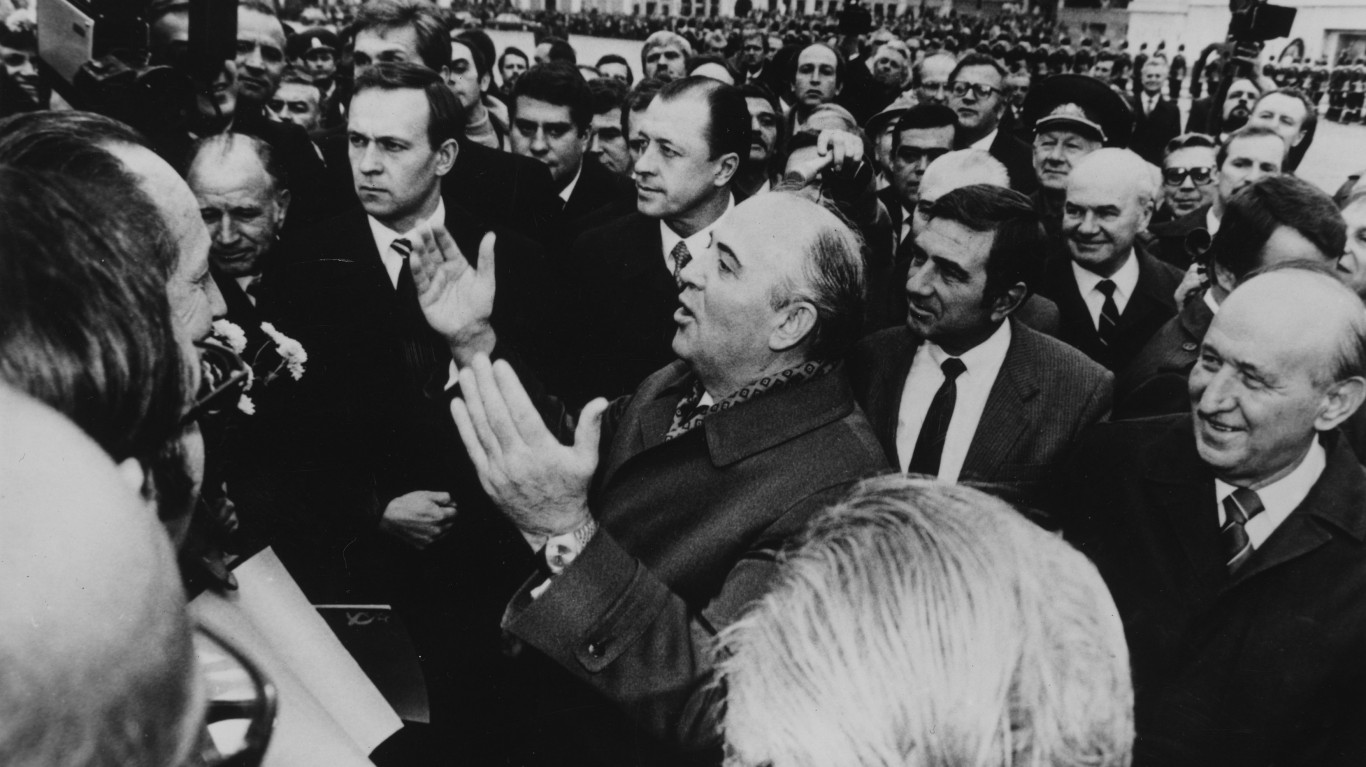
1985
> Doomsday clock position: 3 minutes to midnight
> Nuclear tests: 36
Mikhail Gorbachev becomes head of the Soviet Union. He launches a new policy of “glasnost” or openness to freedom of expression.

1986
> Doomsday clock position: 3 minutes to midnight
> Nuclear tests: 23
In a sign of a thawing of the Cold War, Reagan and Gorbachev agree to remove all intermediate nuclear missiles from Europe in the historic Intermediate-Range Nuclear Forces Treaty. The INF Treaty would be signed the following year.

1987
> Doomsday clock position: 3 minutes to midnight
> Nuclear tests: 47
Standing before the Brandenburg Gate in Berlin, Reagan declares, “Mr. Gorbachev, tear down this wall!”
[in-text-ad]
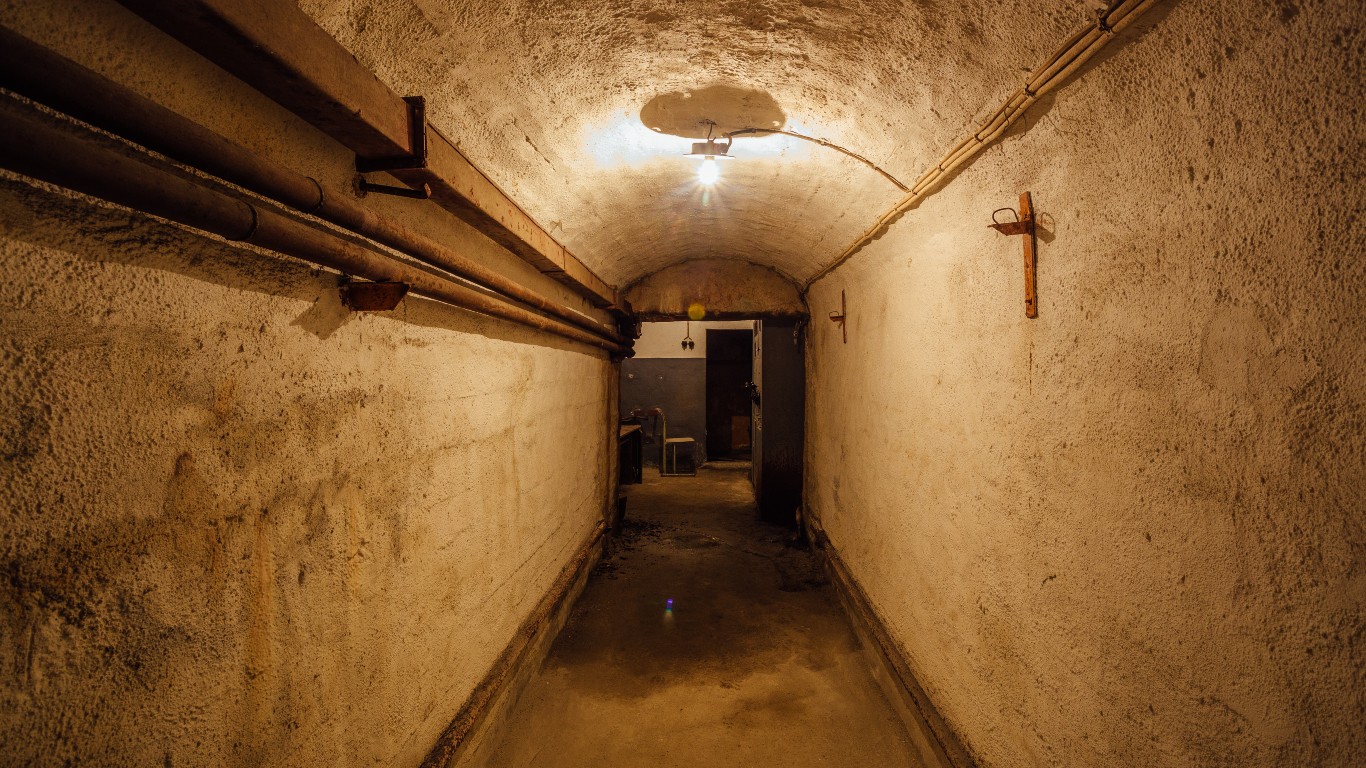
1988
> Doomsday clock position: 6 minutes to midnight
> Nuclear tests: 40
After the signing of the historic Intermediate-Range Nuclear Forces Treaty, the United States and Soviet Union agreed to ban a whole category of nuclear weapons. The leadership shown by President Ronald Reagan and Soviet Premier Mikhail Gorbachev makes the treaty a reality, but public opposition to U.S. nuclear weapons in Western Europe inspires it, the Bulletin notes as it moves back the clock three minutes away from midnight.

1989
> Doomsday clock position: 6 minutes to midnight
> Nuclear tests: 28
On Nov. 9, the Berlin Wall finally falls, as Hungary, Czechoslovakia, Bulgaria, Rumania, and Poland break from their communist governments. East and West Germany would be reunited a year later.
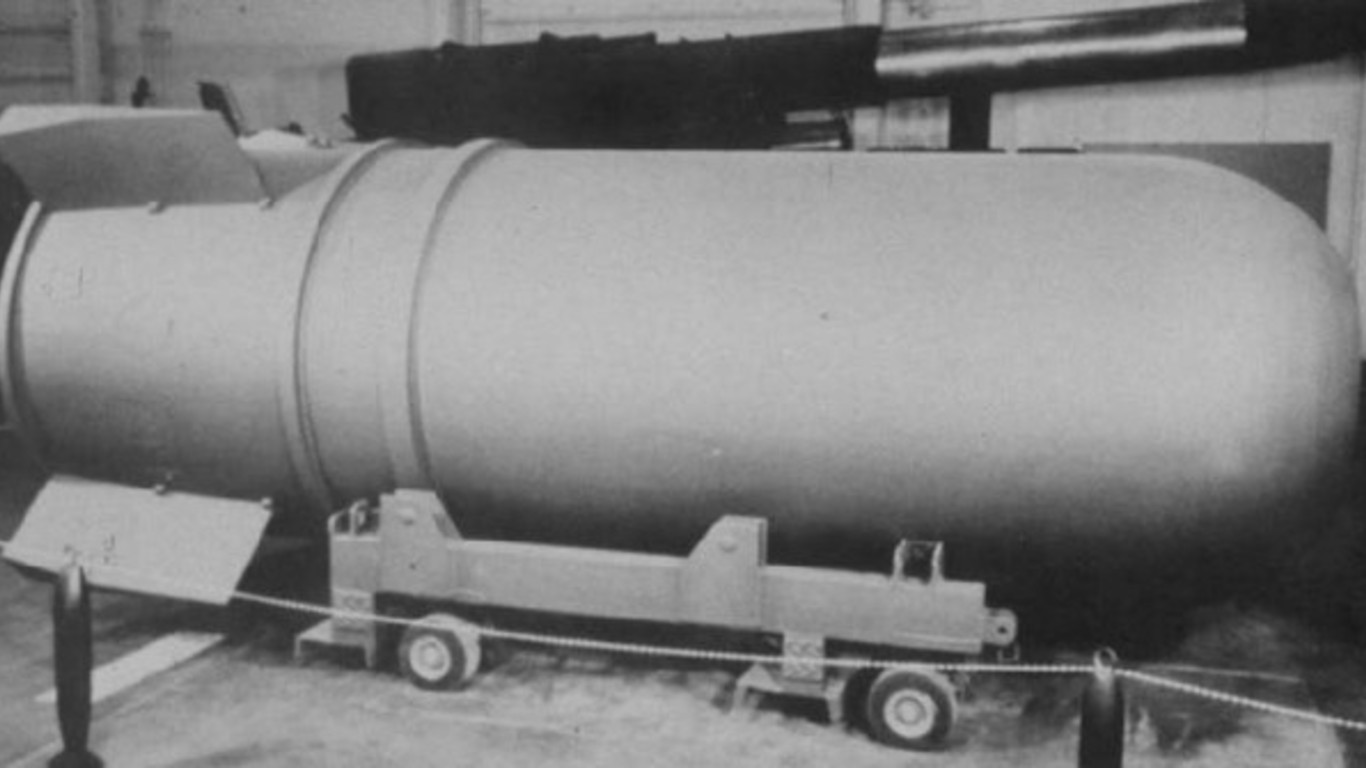
1990
> Doomsday clock position: 10 minutes to midnight
> Nuclear tests: 18
“We are poised to bend the arc of history toward a world free of nuclear weapons,” is the Bulletin’s assessment as it moves the clock four more minutes back from midnight. Talks between Washington and Moscow for a follow-on agreement to the Strategic Arms Reduction Treaty are nearly complete, and more negotiations for further reductions in the U.S. and Russian nuclear arsenal are already planned.
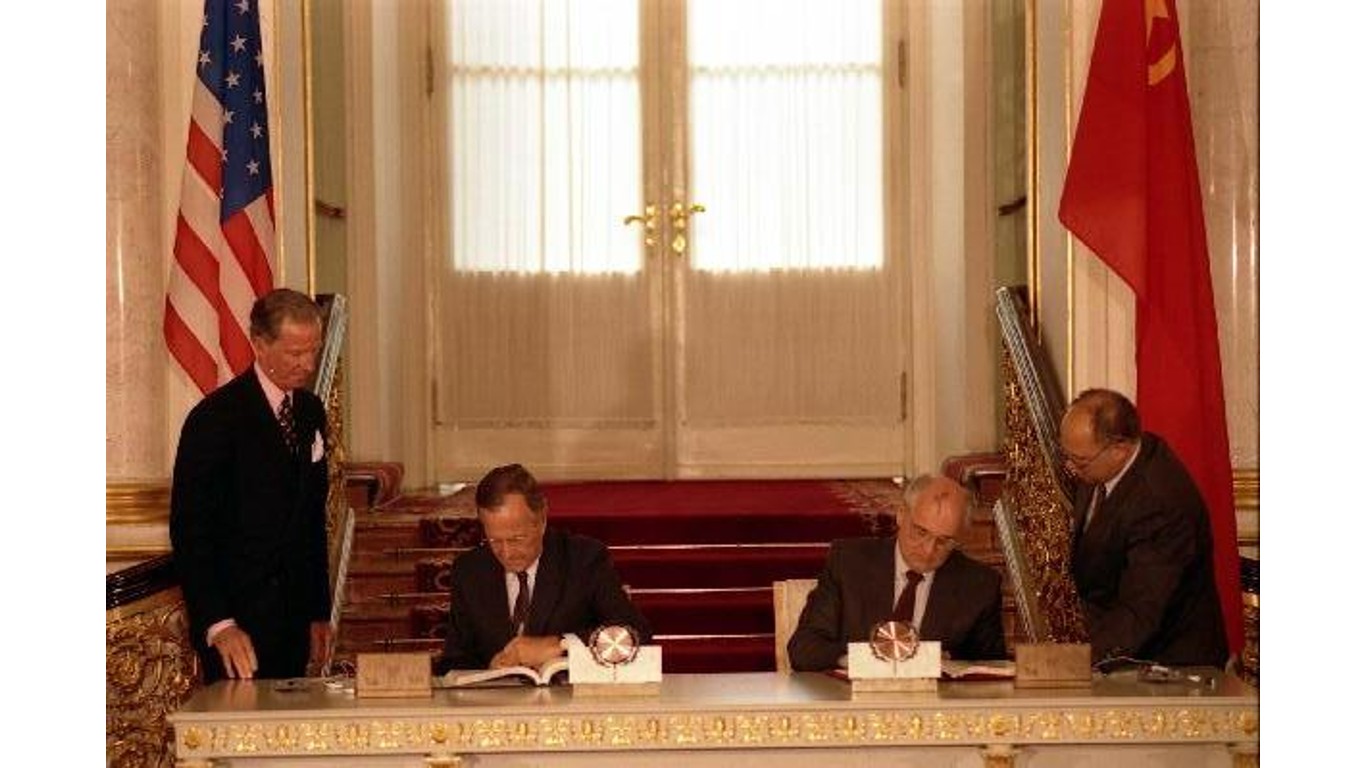
1991
> Doomsday clock position: 17 minutes to midnight
> Nuclear tests: 14
With the Cold War officially over, the United States and Russia begin making deep cuts to their nuclear arsenals. The Strategic Arms Reduction Treaty greatly reduces the number of strategic nuclear weapons deployed by the two former world power adversaries. “The illusion that tens of thousands of nuclear weapons are a guarantor of national security has been stripped away,” the Bulletin declares as it moves the clock to its furthest position from midnight ever.
1992
> Doomsday clock position: 17 minutes to midnight
> Nuclear tests: 8
The breakup of Yugoslavia leads to the Bosnia War, a conflict between the Republic of Bosnia and Herzegovina and Bosnian Serbs and Bosnian Croats entities within Bosnia and Herzegovina,
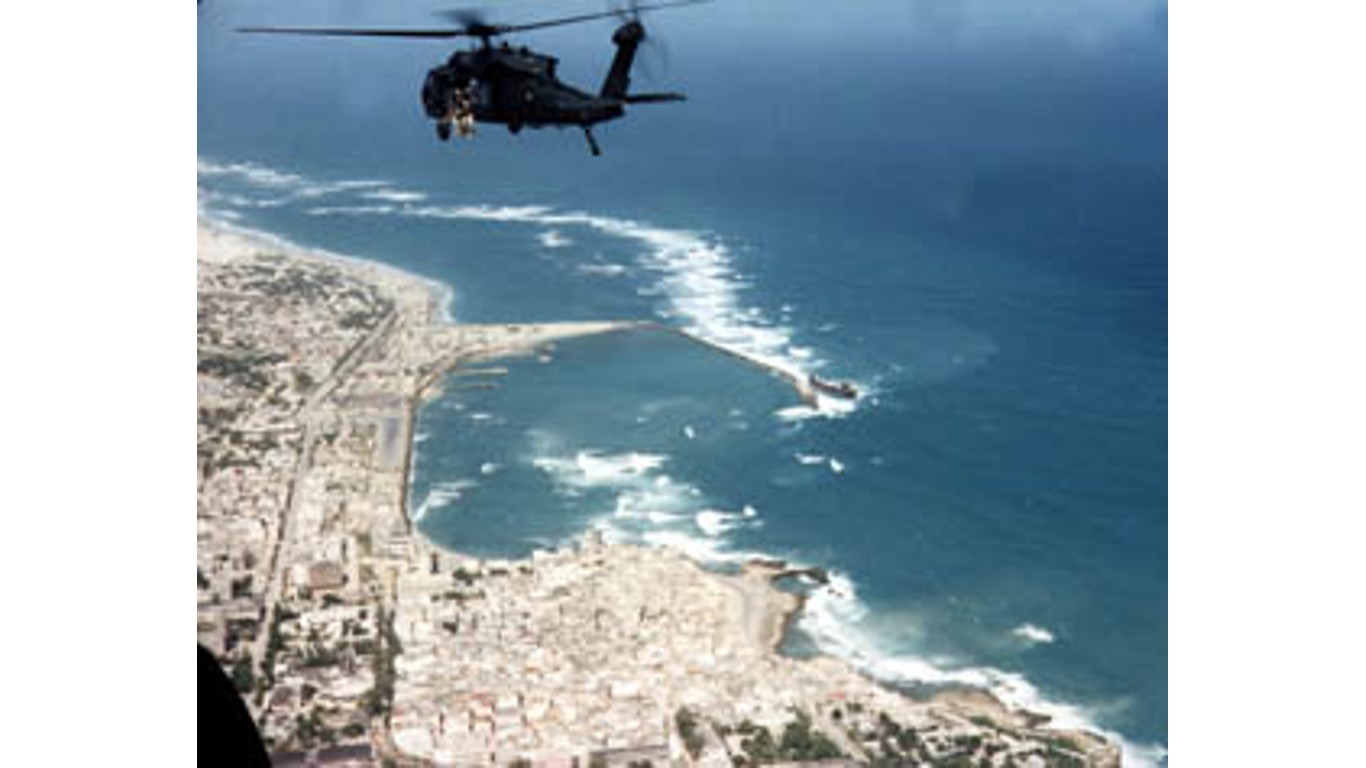
1993
> Doomsday clock position: 17 minutes to midnight
> Nuclear tests: 1
In a firefight with rebels in Somalia, 18 U.S. soldiers die after their Black Hawk helicopters are shot down. The troops are sent to quell a rebellion within the country.
[in-text-ad-2]
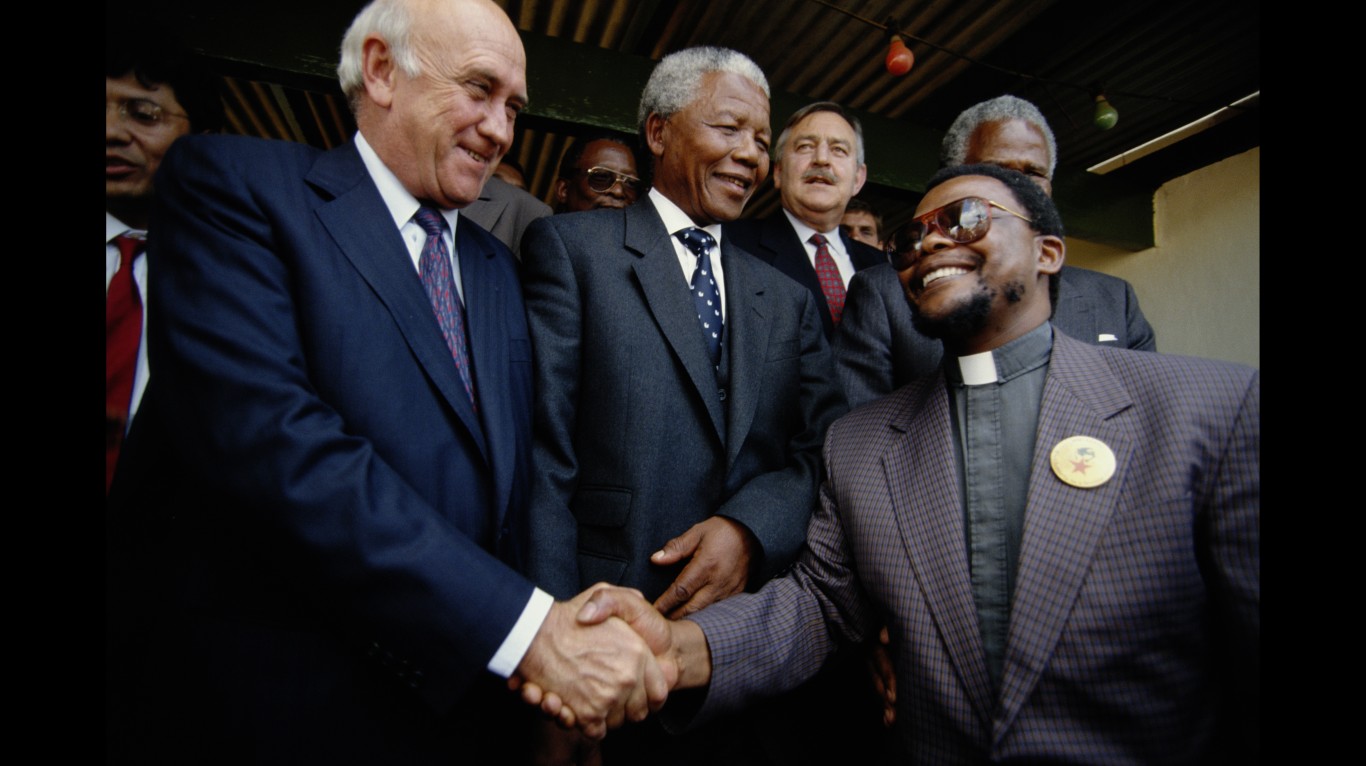
1994
> Doomsday clock position: 17 minutes to midnight
> Nuclear tests: 2
After years of apartheid, Nelson Mandela becomes the first Black president of South Africa.
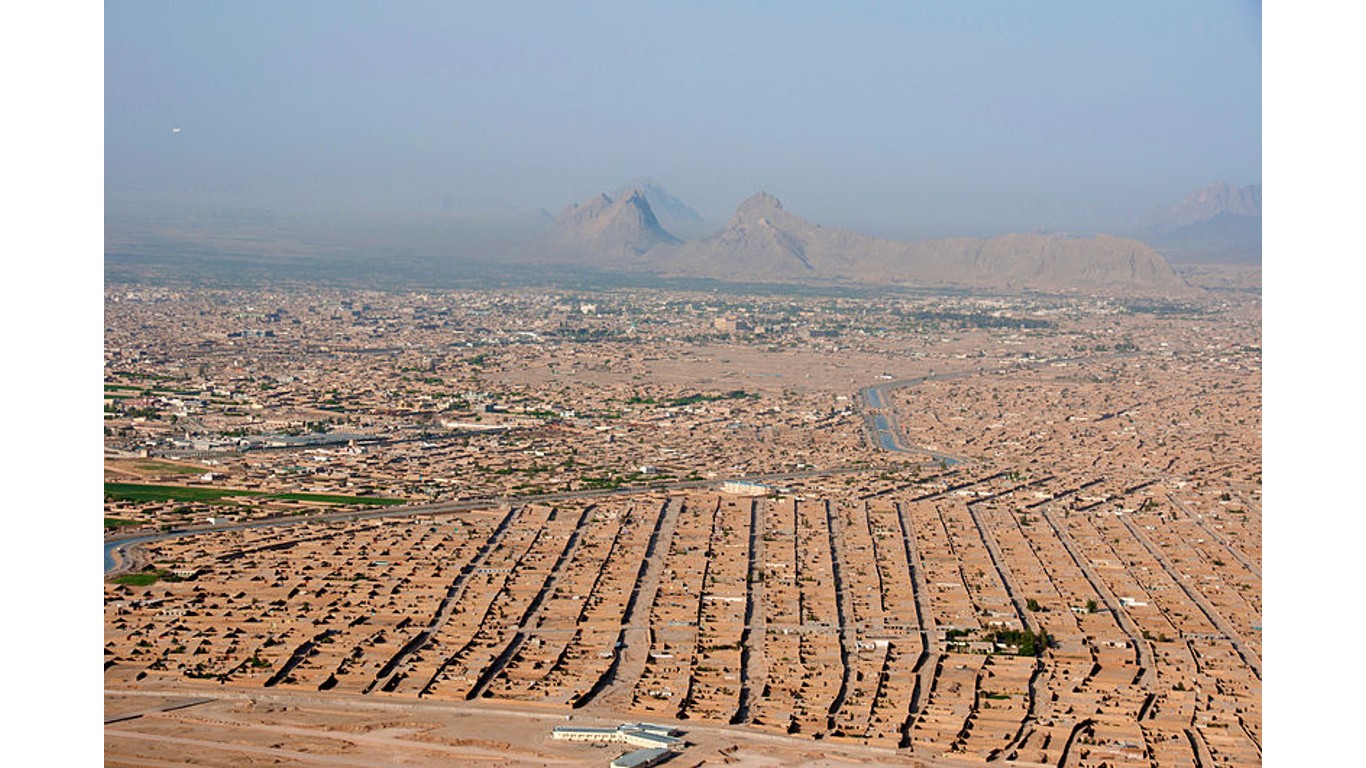
1995
> Doomsday clock position: 14 minutes to midnight
> Nuclear tests: 7
> Doomsday clock position: 14 minutes to midnight
> Nuclear tests: 3
Hopes for a post-Cold War peace and a renouncing of nuclear weapons fade as more than 40,000 nuclear weapons remain worldwide. Hardliners in the U.S. still see Russia as a threat. There is also concern that terrorists could exploit poorly secured nuclear facilities in the former Soviet Union, the Bulletin warns and moves the clock three minutes closer to midnight.
strong>1996
The Taliban, a militant Islamic group, first comes to power in Afghanistan.
1997
> Doomsday clock position: 14 minutes to midnight
> Nuclear tests: 0
After 99 years, Britain turns Hong Kong over to China. China agrees to maintain the city’s freedoms not permitted in the rest of the country.
1998
> Doomsday clock position: 9 minutes to midnight
> Nuclear tests: 4
India and Pakistan stage nuclear weapons tests only three weeks apart. “The tests are a symptom of the failure of the international community to fully commit itself to control the spread of nuclear weapons,” a dismayed Bulletin reports as it moves the clock five minutes closer to midnight. Russia and the United States still maintain 7,000 warheads ready to fire at each other within 15 minutes warning.
[in-text-ad]
1999
> Doomsday clock position: 9 minutes to midnight
> Nuclear tests: 0
Boris Yeltsin, who had served as president of Russia since 1991, resigns and hands over power to Vladimir Putin.
2000
> Doomsday clock position: 9 minutes to midnight
> Nuclear tests: 0
Anticipation for the new millennium is high, but so are concerns about the Y2K bug, also called the Year 2000 bug, or the Millennium bug. The bug is expected to wreck computer programs as the year switches to 2000, but few problems actually result.
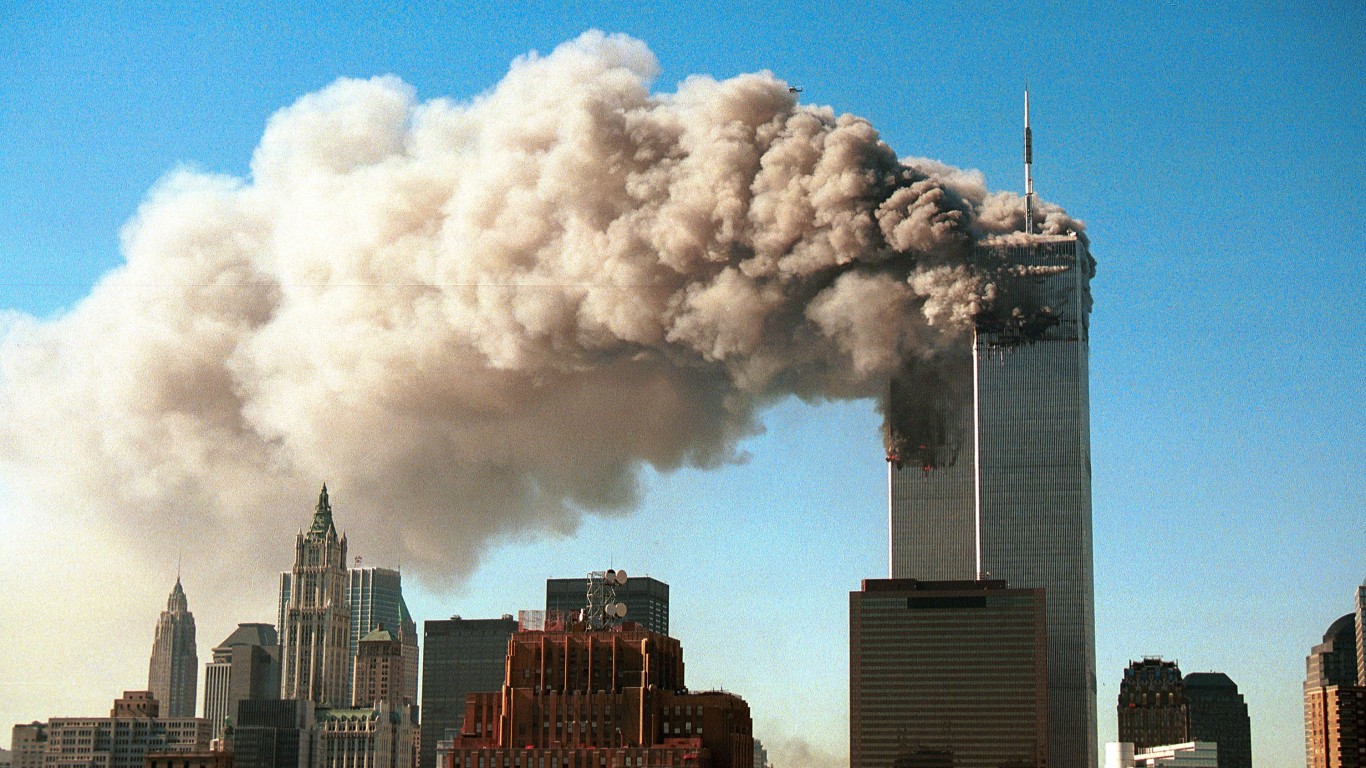
2001
> Doomsday clock position: 9 minutes to midnight
> Nuclear tests: 0
On Sept. 11, 2001, hijackers linked to terrorist group al-Qaeda fly planes into the both World Trade towers and the Pentagon. A fourth plane crashes in a Pennsylvania field. The killing of thousands of innocent civilians leads to wars in Iraq and Afghanistan.

2002
> Doomsday clock position: 7 minutes to midnight
> Nuclear tests: 0
After the 9/11 attacks, concerns mount regarding a nuclear attack with unsecured nuclear materials. The U.S. rejects a series of arms control treaties and announces it will withdraw from the Anti-Ballistic Missile Treaty, instead seeking to build new nuclear weapons, the Bulletin explains and moves the clock two minutes closer to midnight.
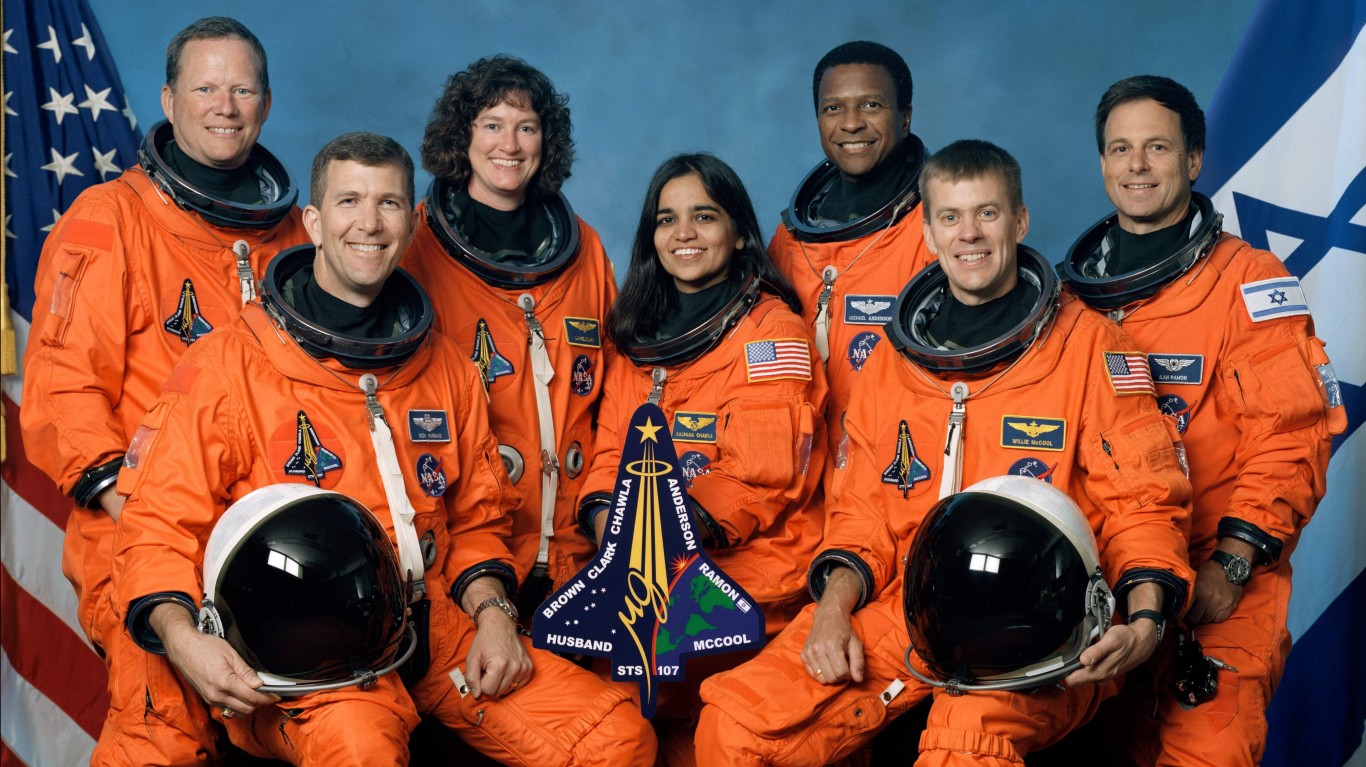
2003
> Doomsday clock position: 7 minutes to midnight
> Nuclear tests: 0
NASA’s space program takes a devastating blow when the space shuttle Columbia breaks up as it returns to Earth, killing all seven astronauts aboard. The disaster follows the 1986 Challenger catastrophe.

2004
> Doomsday clock position: 7 minutes to midnight
> Nuclear tests: 0
> Doomsday clock position: 7 minutes to midnight
> Nuclear tests: 0
In Beijing, U.S. Energy Secretary Spencer Abraham and Chairman of the China Atomic Energy Authority Zhang Huazhu commit to heightened cooperation on nuclear proliferation, security, and counterterrorism.
strong>2005
Hurricane Katrina slams into New Orleans and the Gulf Coast, causing 1,833 deaths and roughly $108 billion in damage (in 2005 dollars).
[in-text-ad-2]

2006
> Doomsday clock position: 7 minutes to midnight
> Nuclear tests: 1
On Aug. 31, Iran refuses to halt its nuclear program, leading to the ongoing standoff between Iran and the U.S.

2007
> Doomsday clock position: 5 minutes to midnight
> Nuclear tests: 0
North Korea conducts a nuclear test as the U.S. and Russia remain ready to stage a nuclear attack within minutes. Meanwhile, the Bulletin warns for the first time that climate change presents a dire challenge to humanity and moves the clock two more minutes closer to midnight.

2008
> Doomsday clock position: 5 minutes to midnight
> Nuclear tests: 0
Barack Obama becomes the first Black American elected president of the U.S.
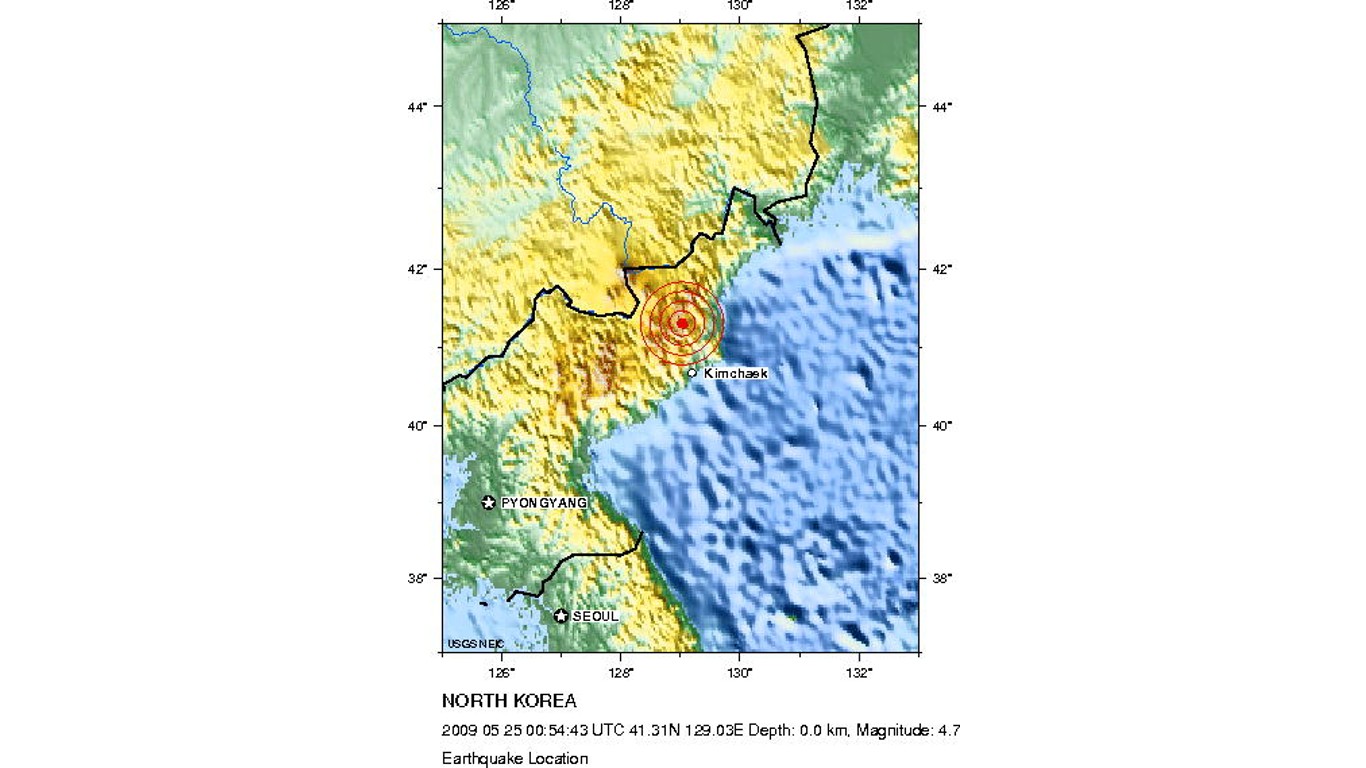
2009
> Doomsday clock position: 5 minutes to midnight
> Nuclear tests: 1
North Korea continues its march toward nuclear weapons with several underground nuclear tests.
[in-text-ad]

2010
> Doomsday clock position: 6 minutes to midnight
> Nuclear tests: 0
“We are poised to bend the arc of history toward a world free of nuclear weapons,” is the Bulletin’s assessment as it moves the clock one minute away from midnight – the last time the position of the clock improved. Talks between Washington and Moscow for a follow-on agreement to the Strategic Arms Reduction Treaty are nearly complete, and more negotiations for further reductions in the U.S. and Russian nuclear arsenal are already planned.
2011
> Doomsday clock position: 6 minutes to midnight
> Nuclear tests: 0
Japan is hit by a devastating earthquake and tsunami. The catastrophe causes a meltdown at the Fukushima Daiichi Nuclear Power Plant.

2012
> Doomsday clock position: 5 minutes to midnight
> Nuclear tests: 0
“The challenges to rid the world of nuclear weapons, harness nuclear power, and meet the nearly inexorable climate disruptions from global warming are complex and interconnected,” the Bulletin stresses as it moves the clock one minute closer to midnight. The pace of technological solutions to address climate change may not be adequate to meet the hardships that large-scale disruption of the climate portends.

2013
> Doomsday clock position: 5 minutes to midnight
> Nuclear tests: 1
For the first time in 55 years, the amount of carbon dioxide in the atmosphere exceeds 400 parts per million. It also may be the first time in 3 million years of Earth history that greenhouse gasses reached such a level.
2014
> Doomsday clock position: 5 minutes to midnight
> Nuclear tests: 0
The 2022 invasion of Russia into Ukraine was not the first in recent years. In 2014, Russia seized control of Crimea from Ukraine.
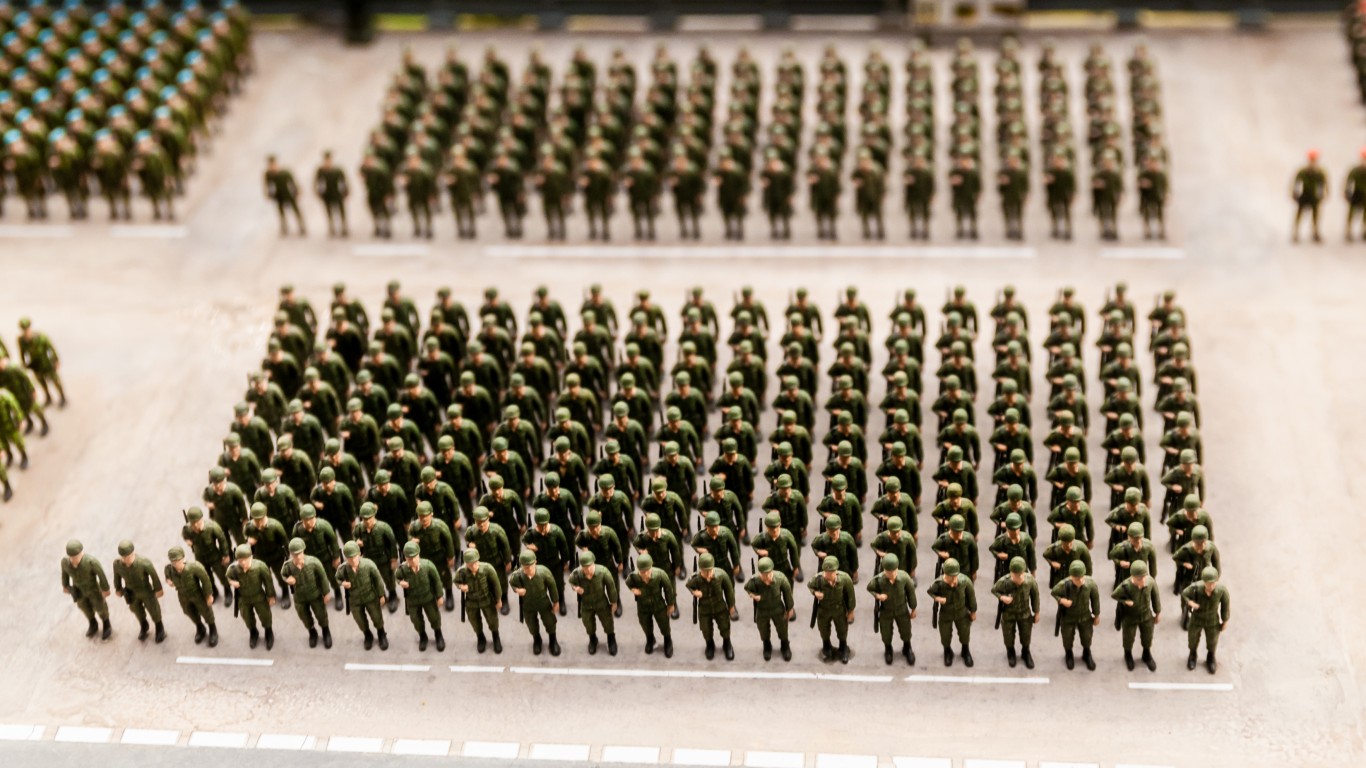
2015
> Doomsday clock position: 3 minutes to midnight
> Nuclear tests: 0
The Doomsday Clock moves two minutes closer to midnight as “unchecked climate change, global nuclear weapons modernizations, and outsized nuclear weapons arsenals pose extraordinary and undeniable threats to the continued existence of humanity,” the Bulletin warns. Despite some modestly positive developments in the climate change arena, current efforts are entirely insufficient to prevent a catastrophic warming of Earth.
[in-text-ad-2]

2016
> Doomsday clock position: 3 minutes to midnight
> Nuclear tests: 2
“Last year, the Science and Security Board moved the Doomsday Clock forward to three minutes to midnight, noting the probability of global catastrophe is very high, and the actions needed to reduce the risks of disaster must be taken very soon,” the Bulletin says in reiterating its position from 2015.

2017
> Doomsday clock position: 2 minutes, 30 seconds to midnight
> Nuclear tests: 1
President Donald Trump withdraws the U.S. from the Paris Climate Agreement, dealing a setback to global efforts on tackling climate change. The Bulletin moves the clock 30 seconds closer to midnight.

2018
> Doomsday clock position: 2 minutes to midnight
> Nuclear tests: 0
The Bulletin moves the clock another 30 seconds closer to midnight, saying, “the failure of world leaders to address the largest threats to humanity’s future is lamentable —but that failure can be reversed. They can seize the opportunity to make a safer and saner world.”

2019
> Doomsday clock position: 2 minutes to midnight
> Nuclear tests: 0
The Bulletin’s Science and Security Board refers to the current world security situation as a “new abnormal,” adding, “This new abnormal is a pernicious and dangerous departure from the time when the United States sought a leadership role in designing and supporting global agreements that advanced a safer and healthier planet.”
[in-text-ad]

2020
> Doomsday clock position: 100 seconds to midnight
> Nuclear tests: 0
Another danger hovers over the planet. In early 2020, the WHO declares the spread of COVID-19 a pandemic. Schools turn to remote learning and most businesses shut down. More than 6.5 million would die of the disease in two and half years. The Bulletin moves the clock to its closest ever position to midnight, 100 seconds.

2021
> Doomsday clock position: 100 seconds to midnight
> Nuclear tests: 0
In one of his first acts in office, President Joe Biden announces plans to rejoin the Paris Climate Agreement.
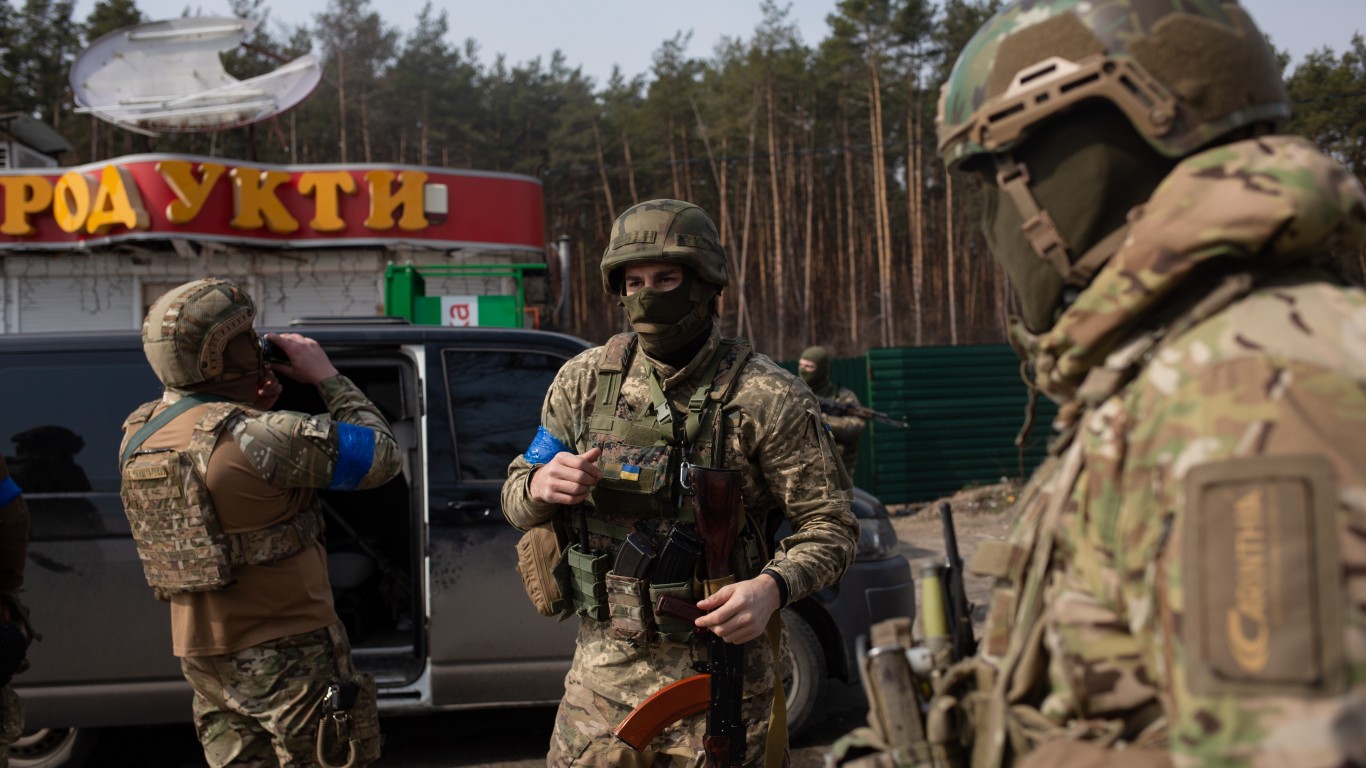
2022
> Doomsday clock position: 100 seconds to midnight
> Nuclear tests: 0
Russia President Vladimir Putin invades Ukraine, the first major battle on European soil after World War II. Putin turns up the heat by threatening the use of a nuclear bomb.
Are You Ahead, or Behind on Retirement? (sponsor)
If you’re one of the over 4 Million Americans set to retire this year, you may want to pay attention. Many people have worked their whole lives preparing to retire without ever knowing the answer to the most important question: are you ahead, or behind on your retirement goals?
Don’t make the same mistake. It’s an easy question to answer. A quick conversation with a financial advisor can help you unpack your savings, spending, and goals for your money. With SmartAsset’s free tool, you can connect with vetted financial advisors in minutes.
Why wait? Click here to get started today!
Thank you for reading! Have some feedback for us?
Contact the 24/7 Wall St. editorial team.